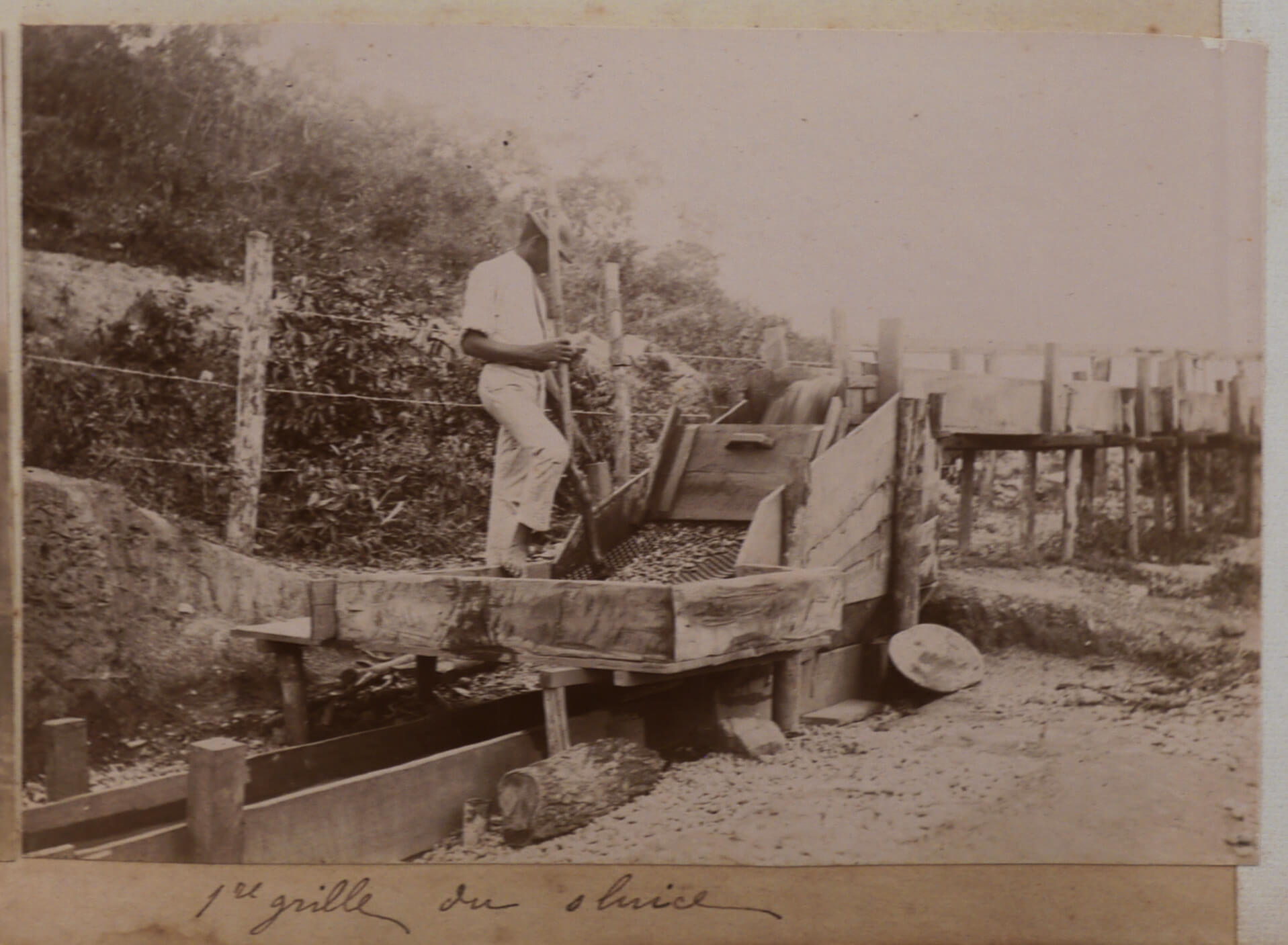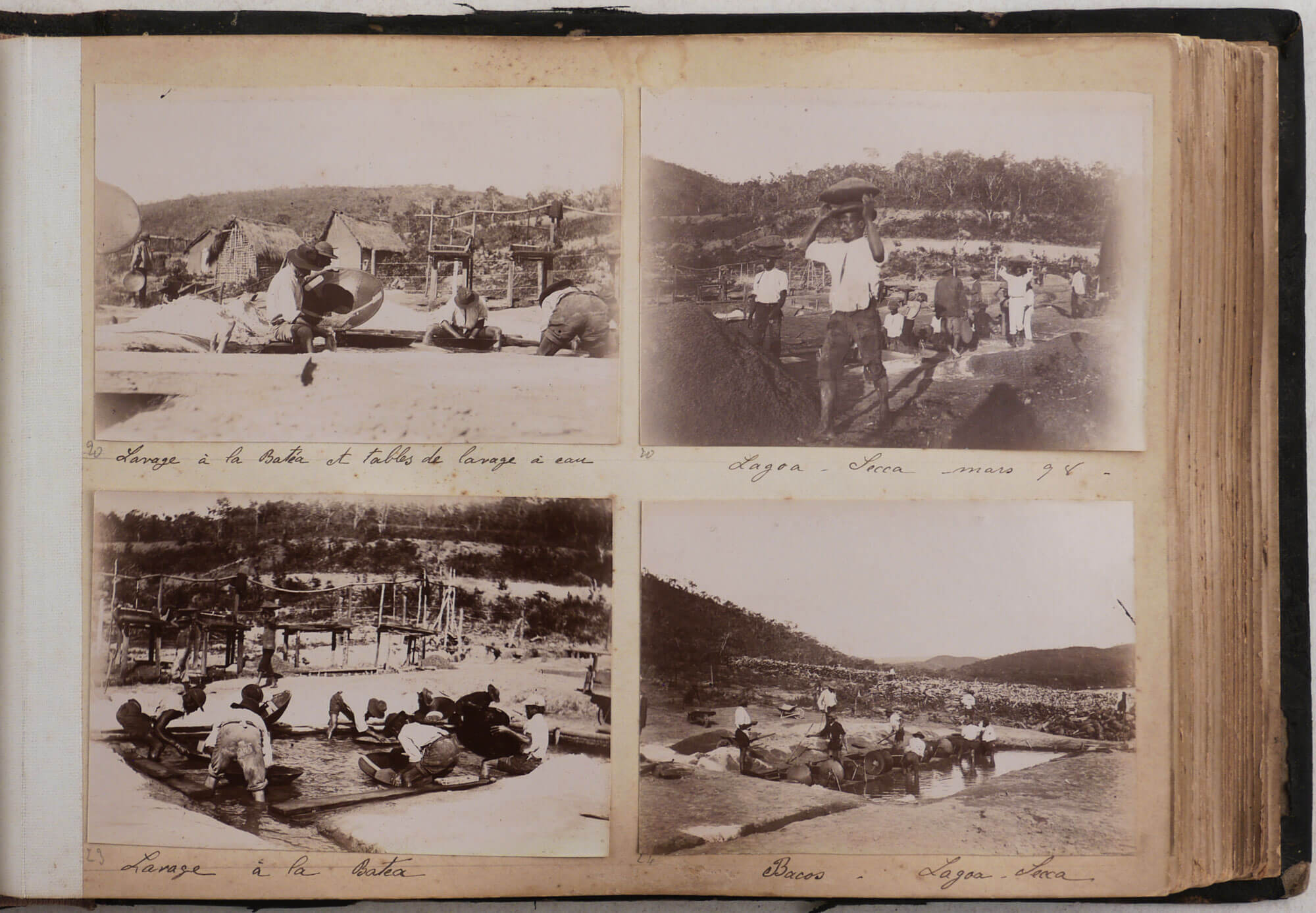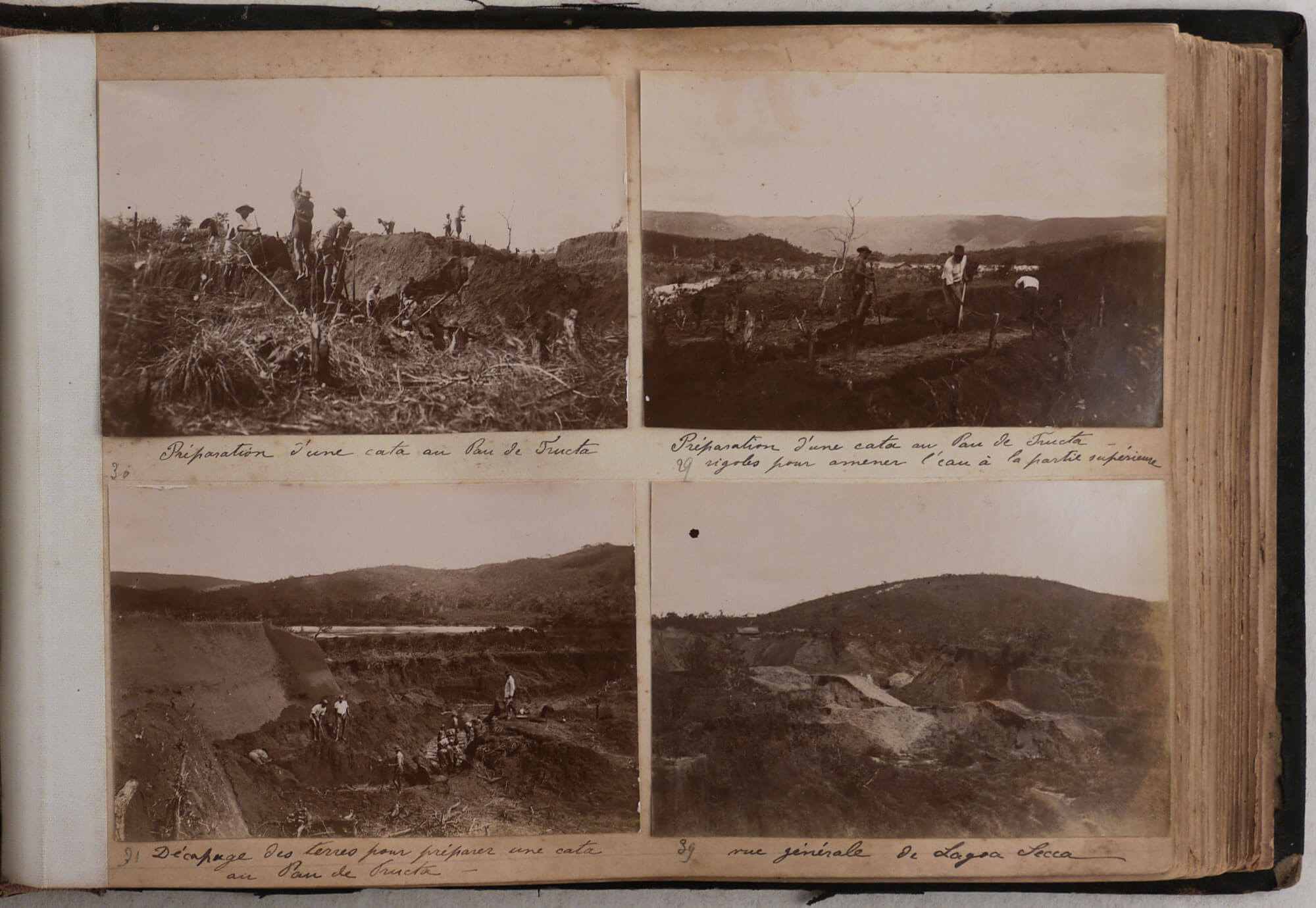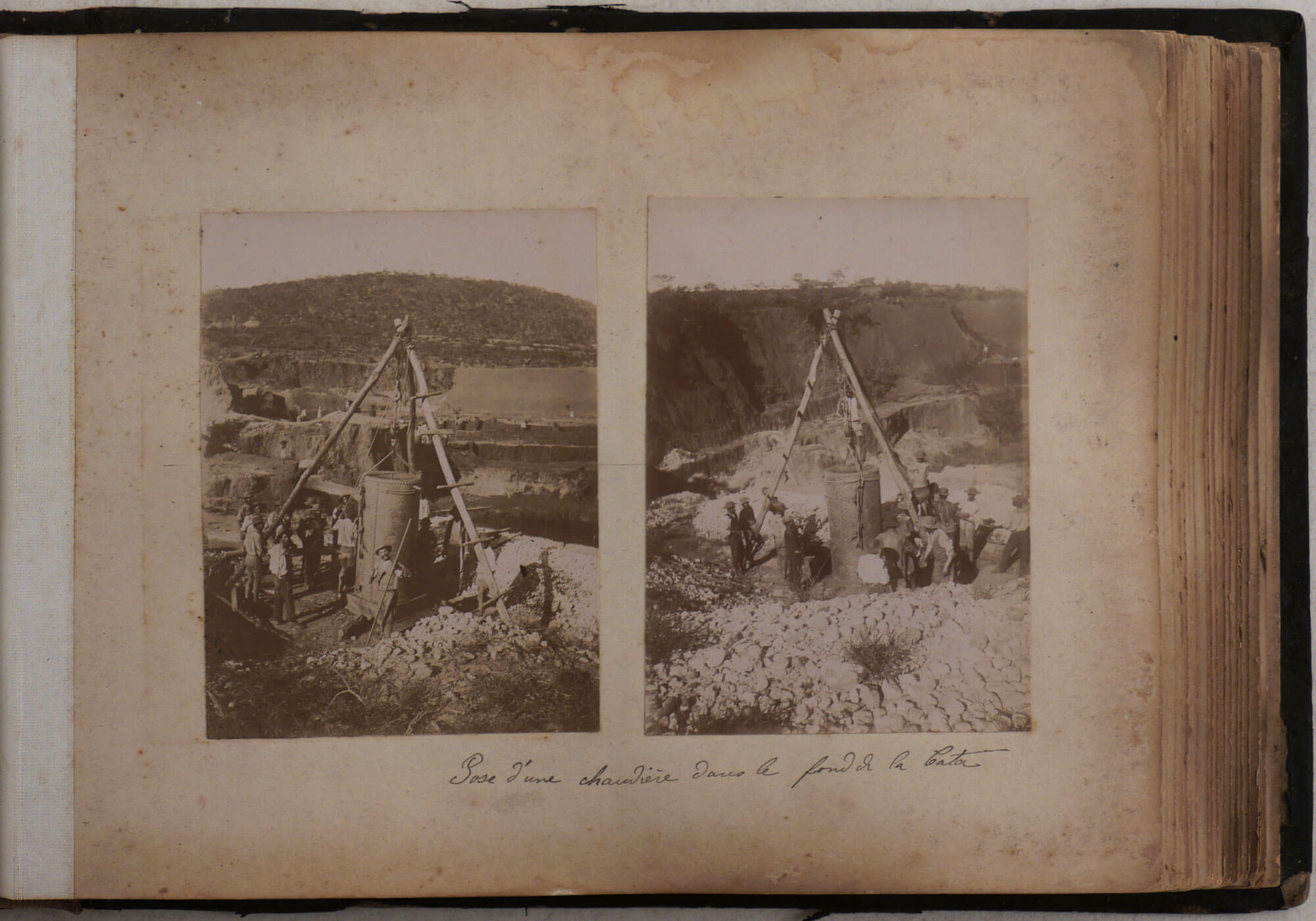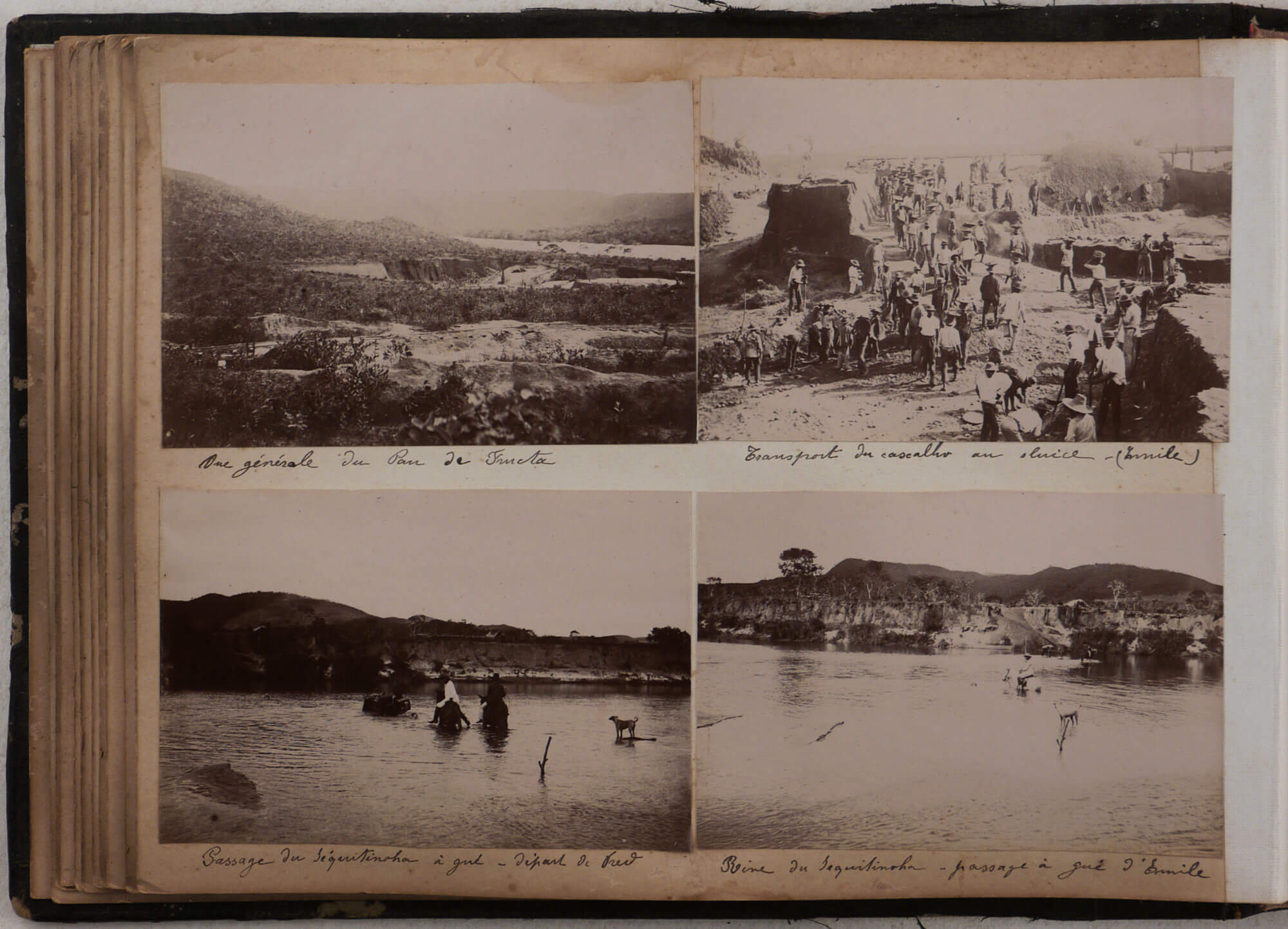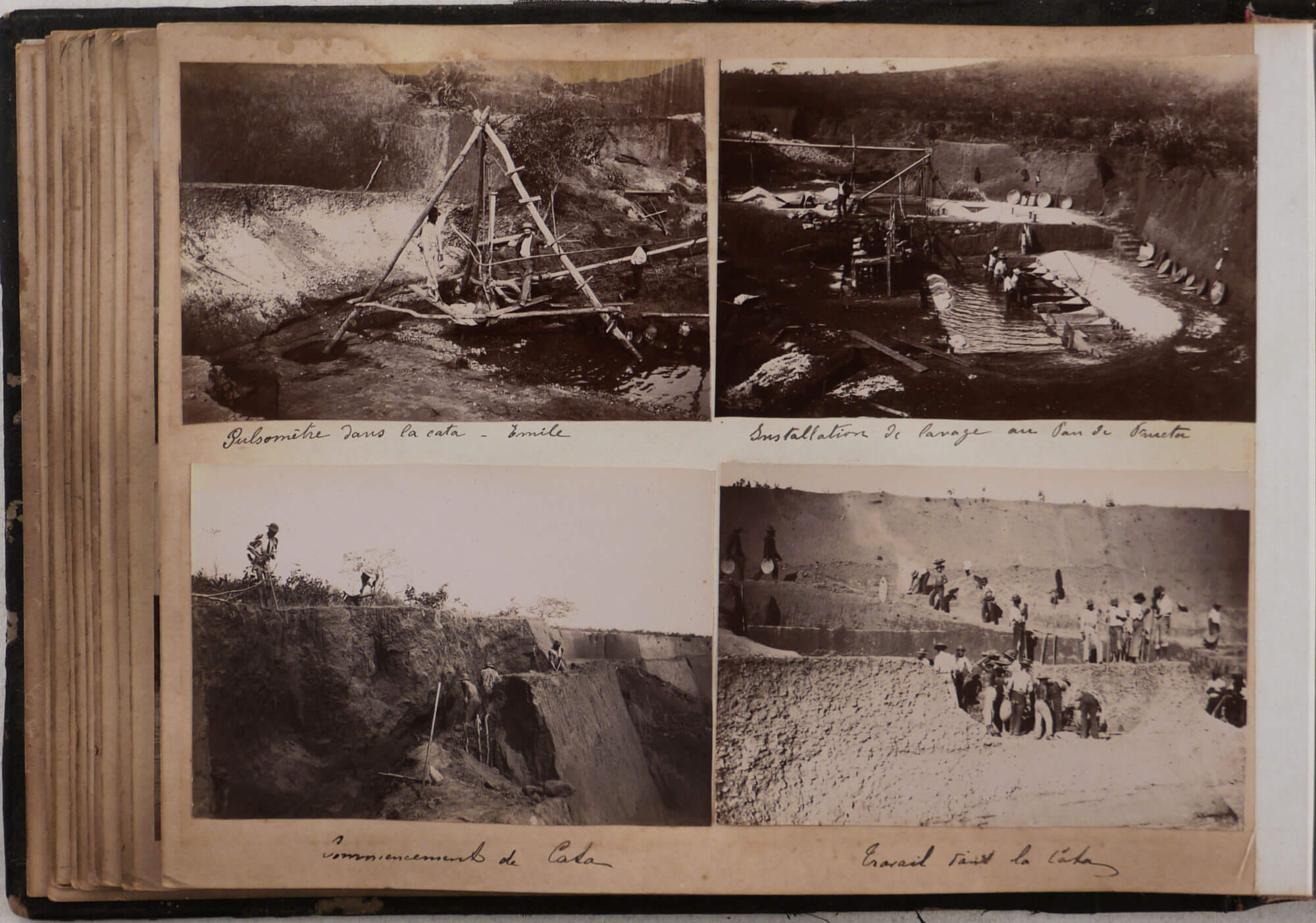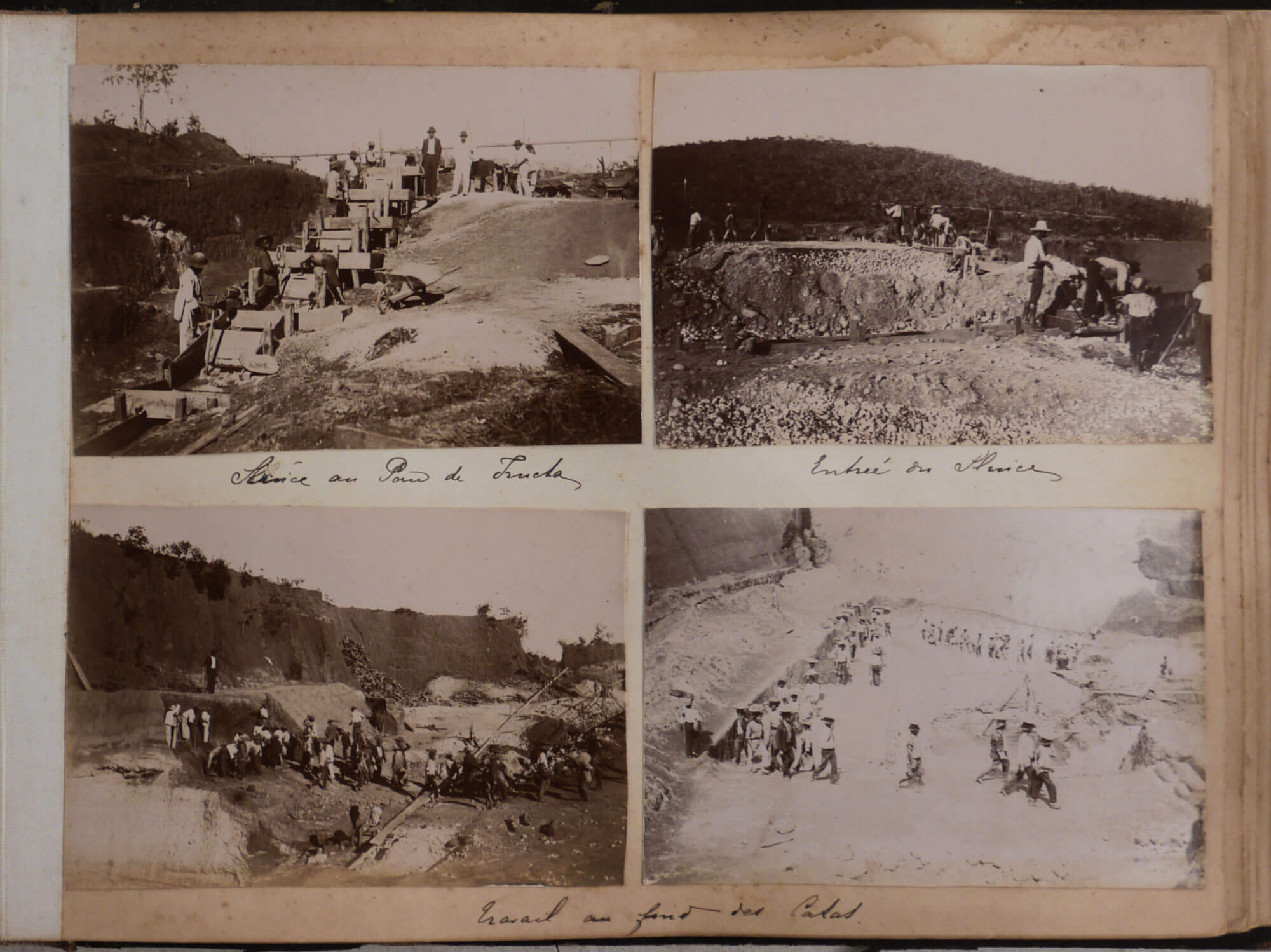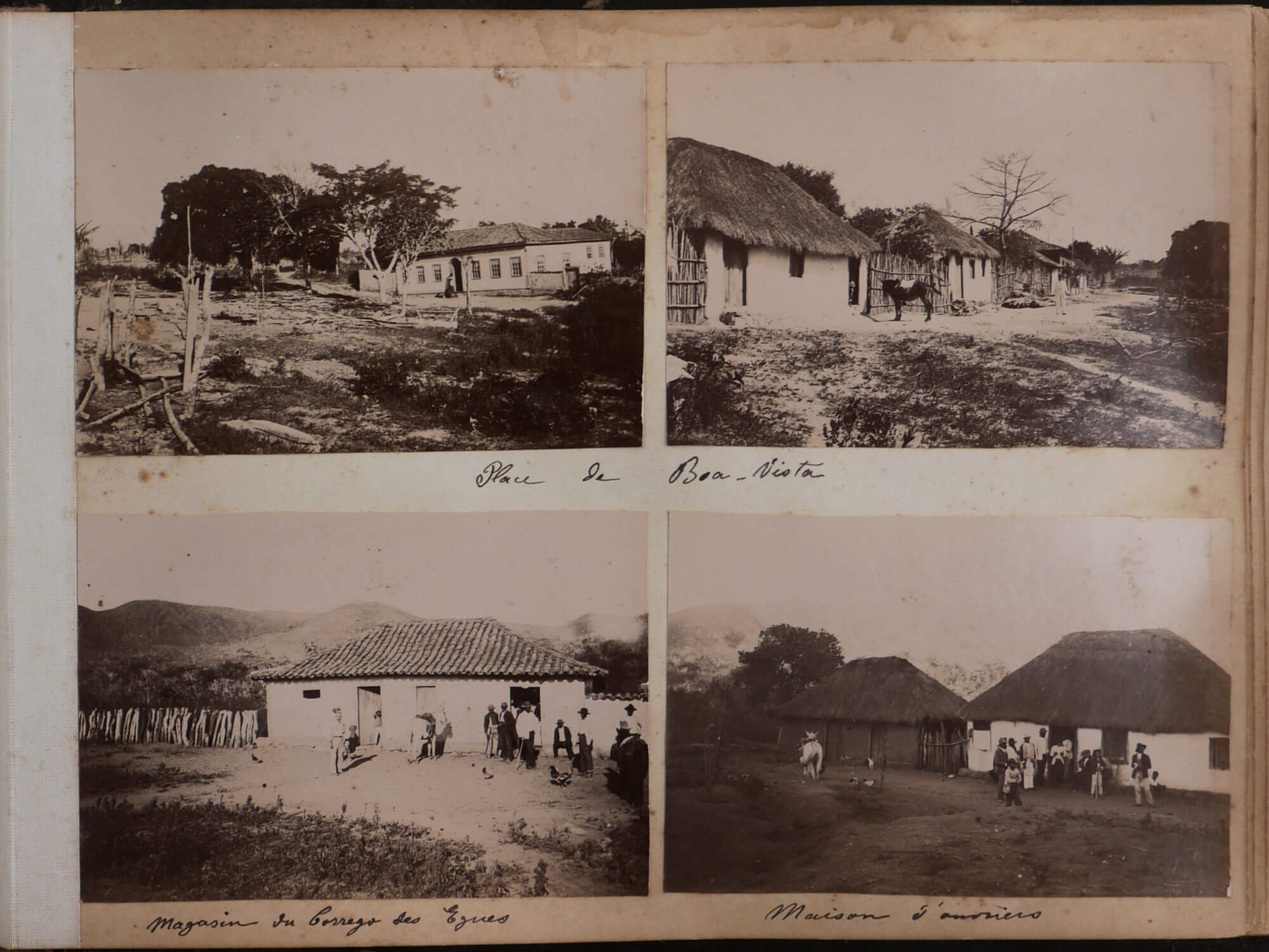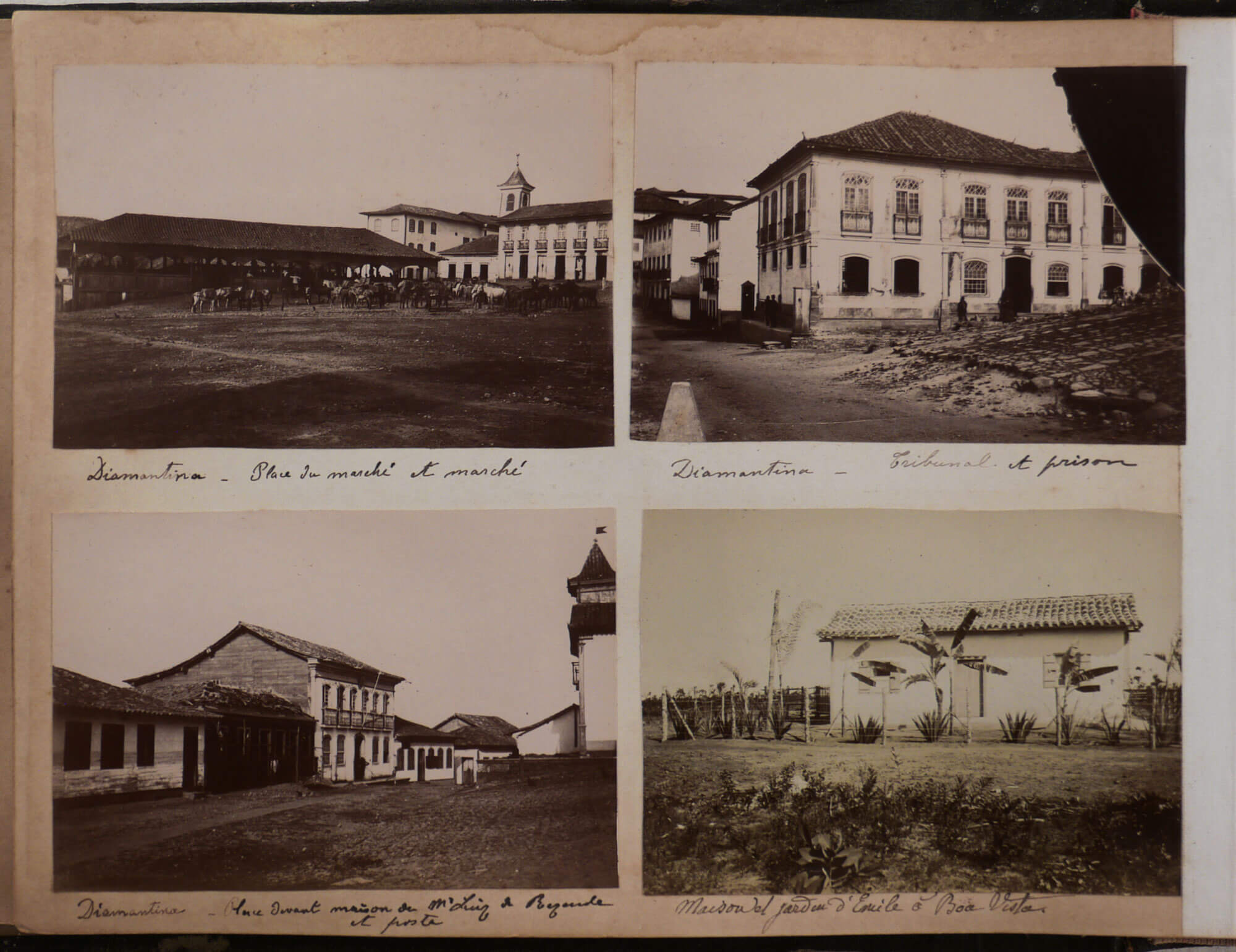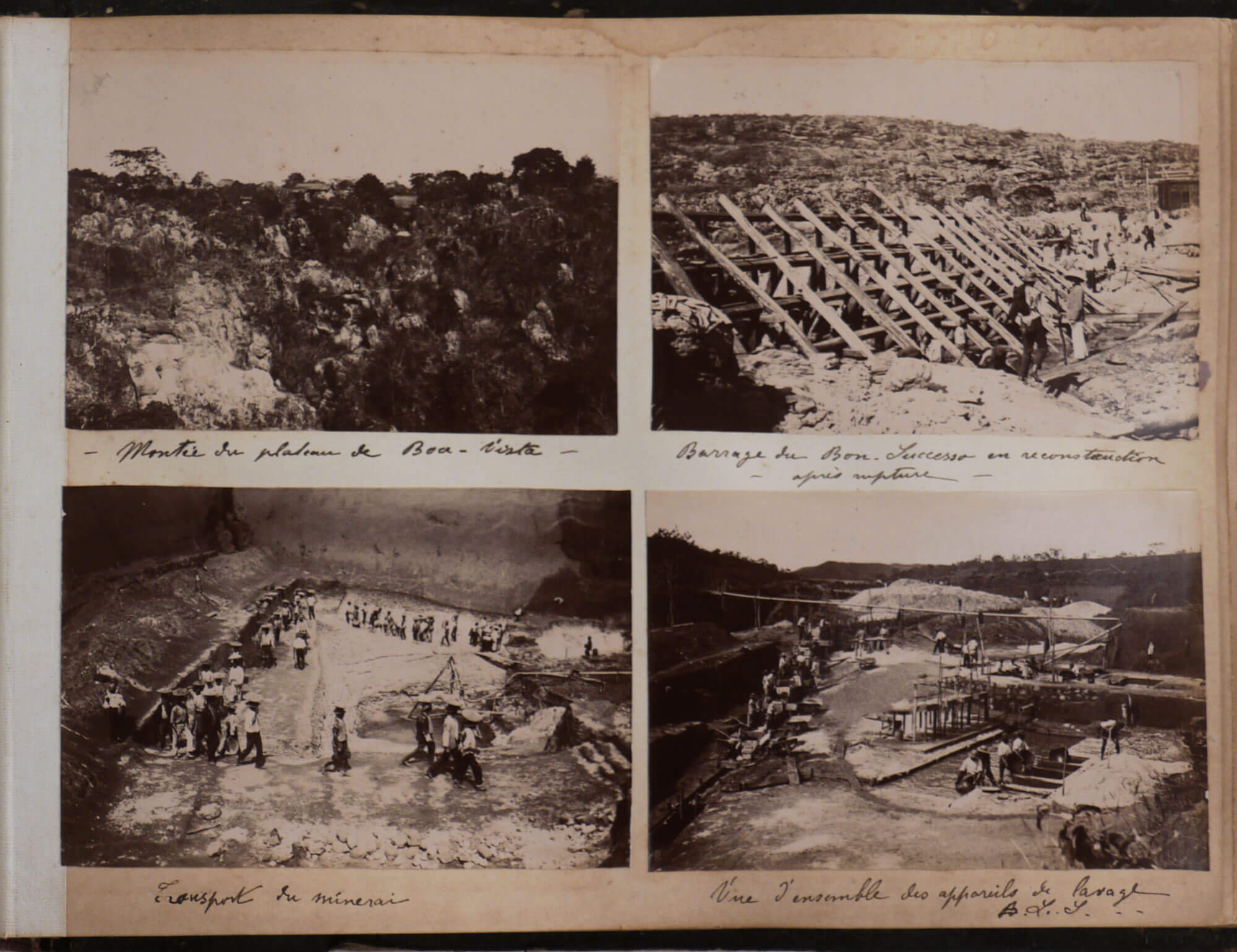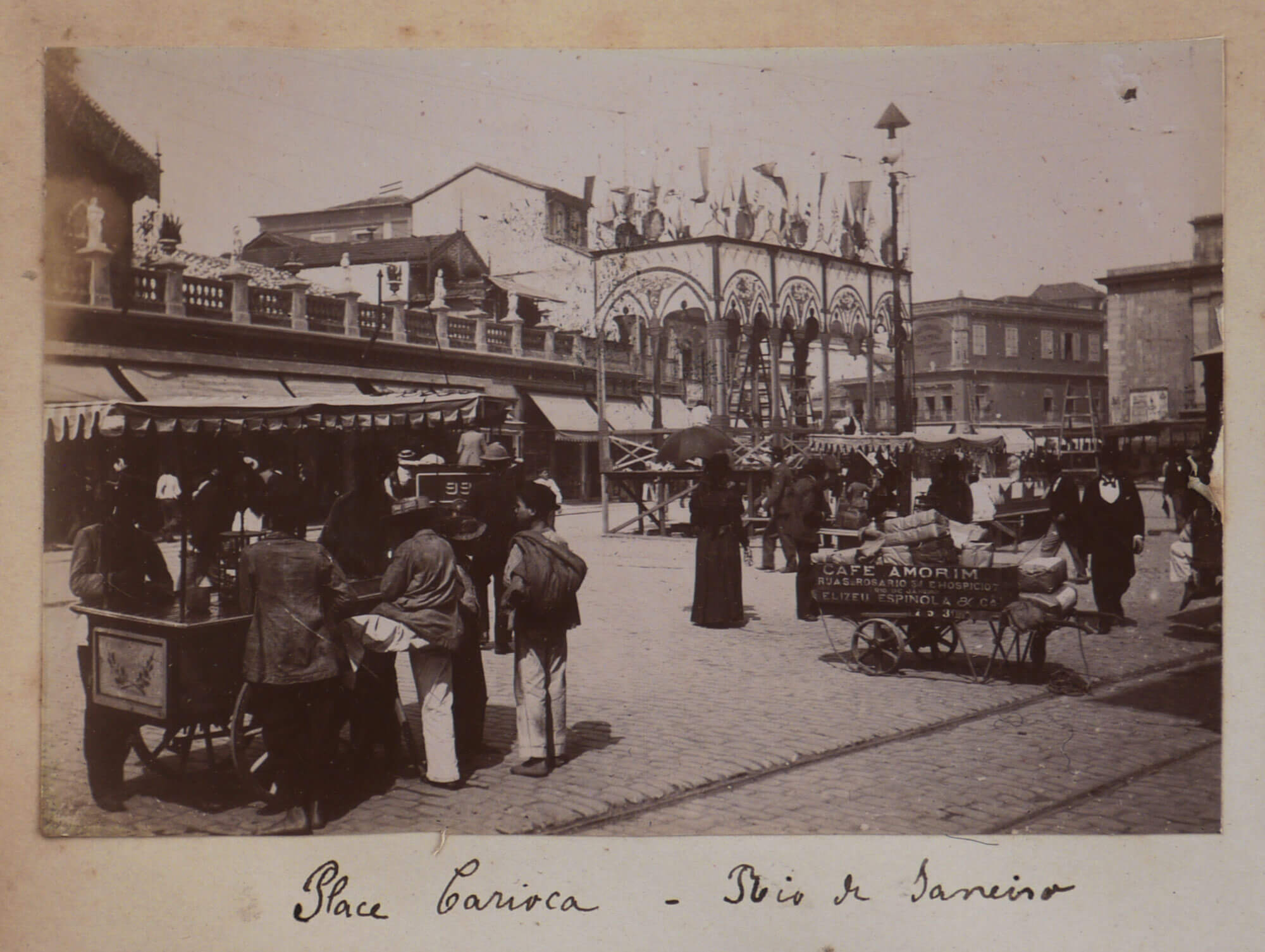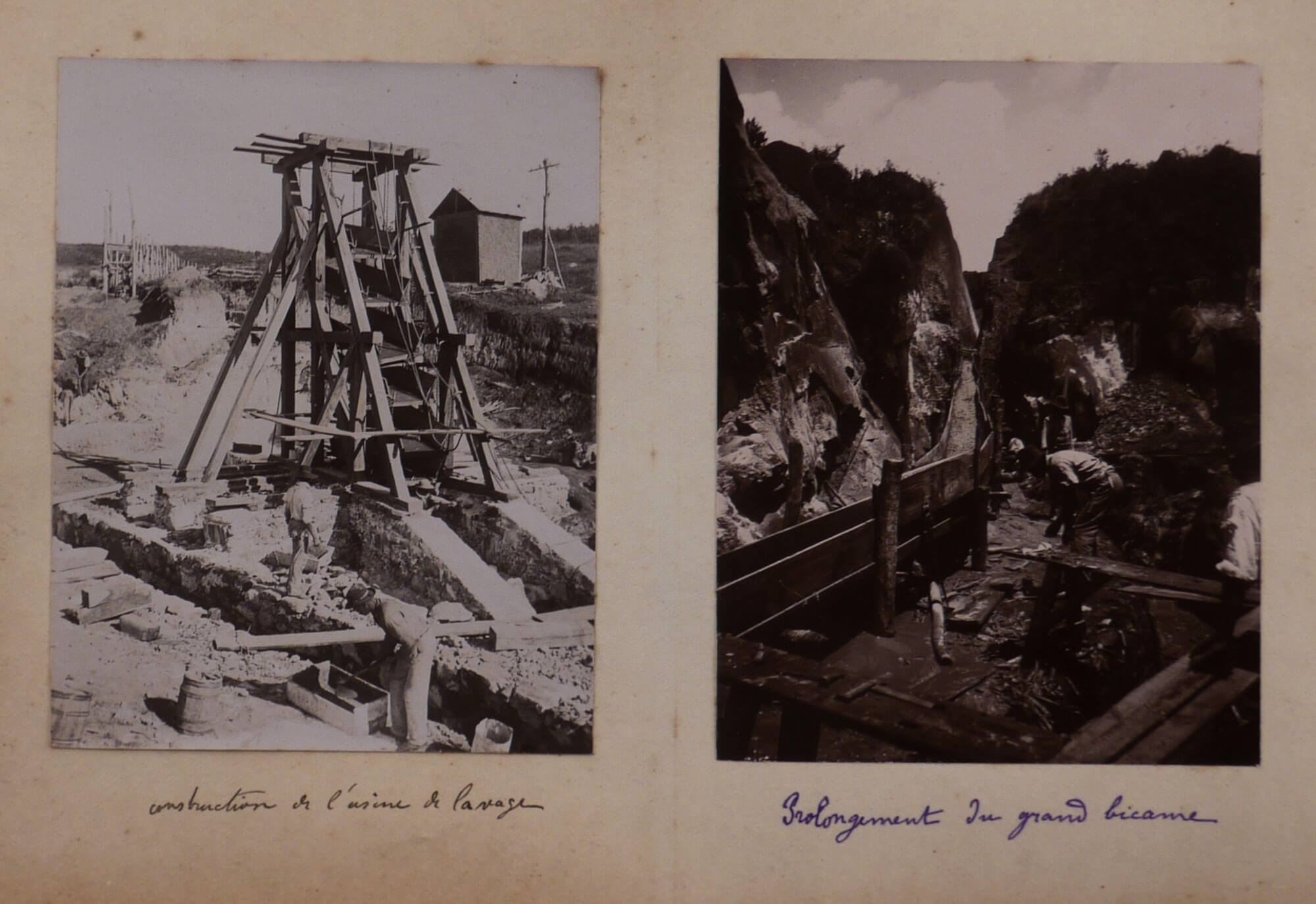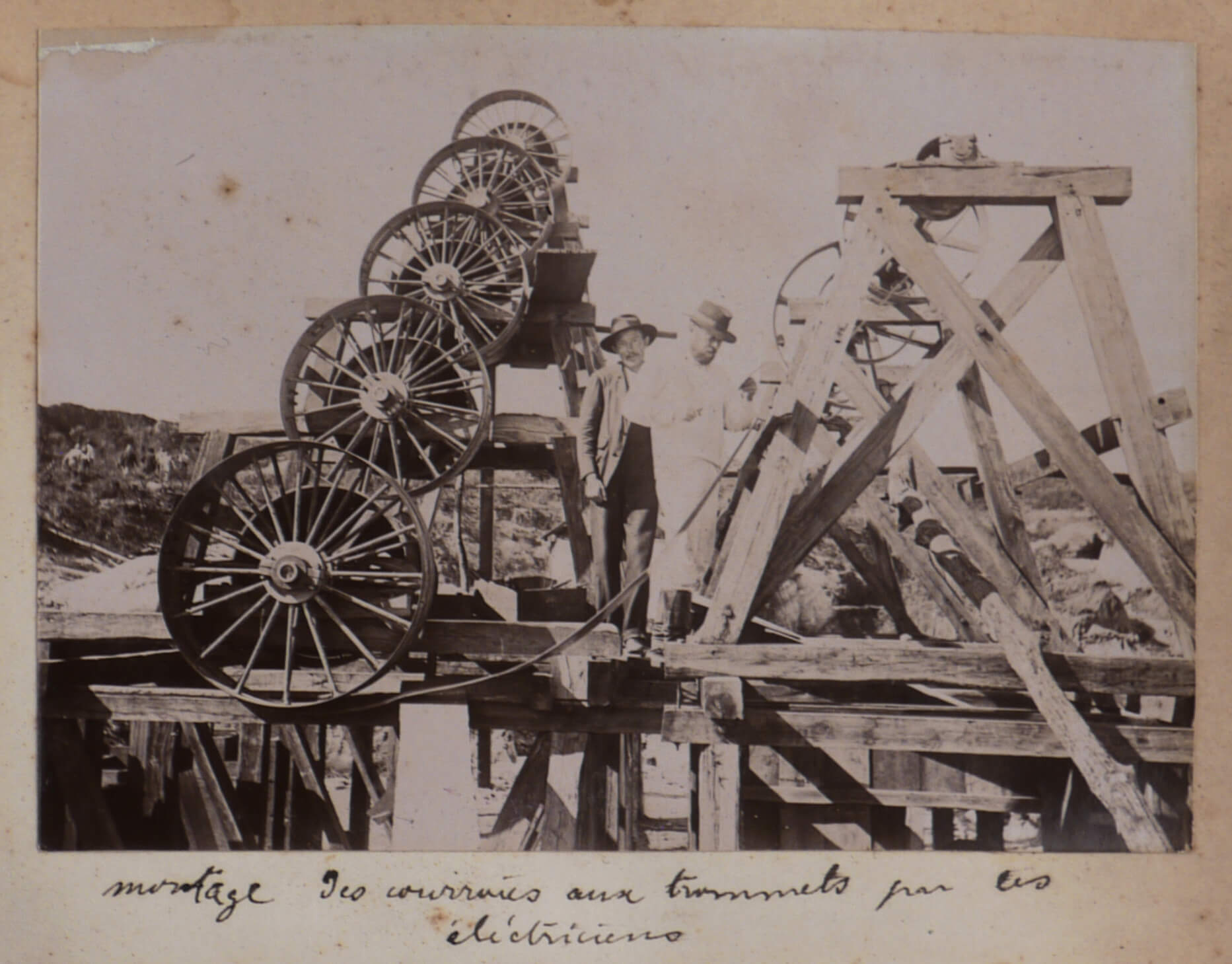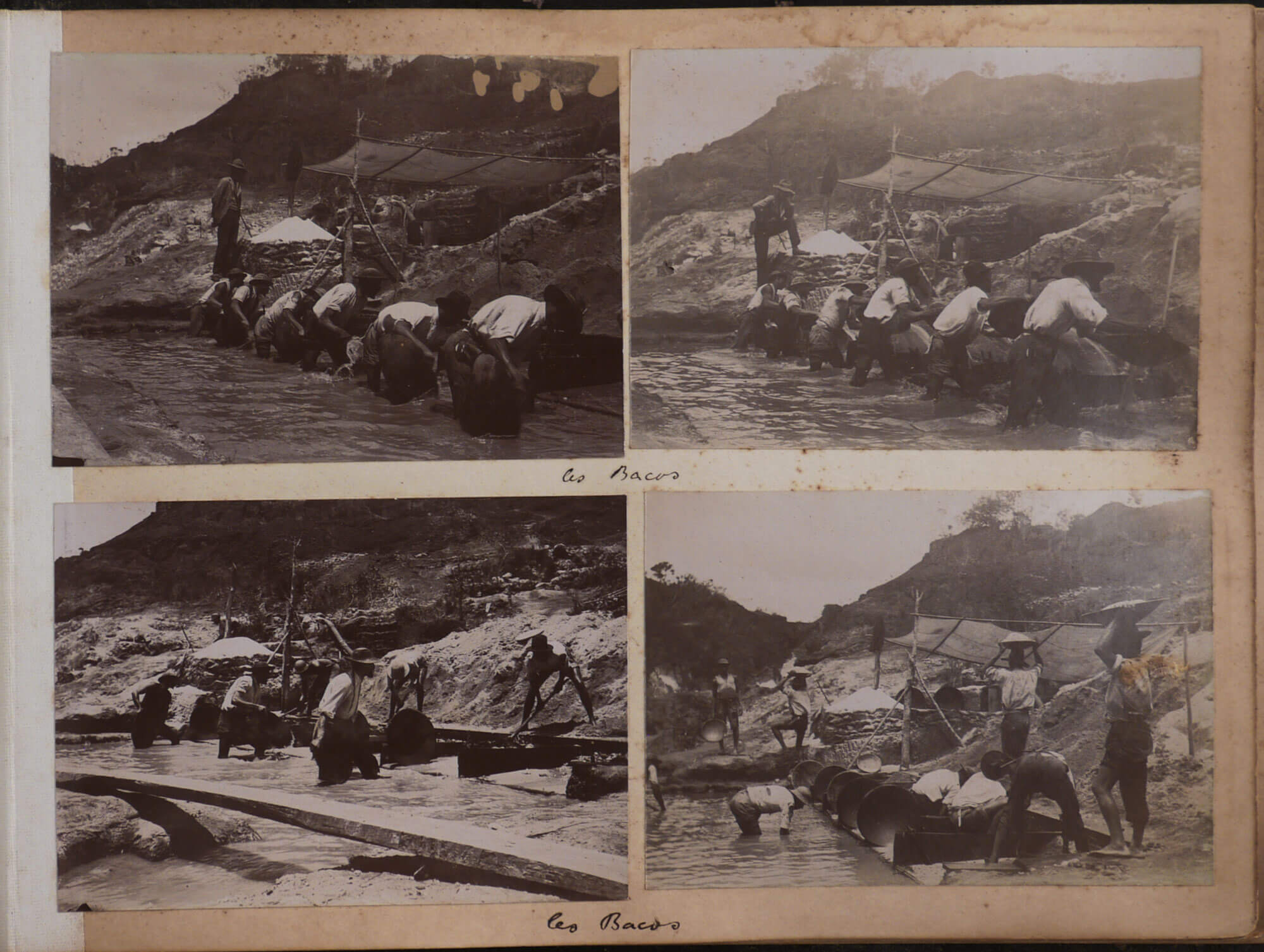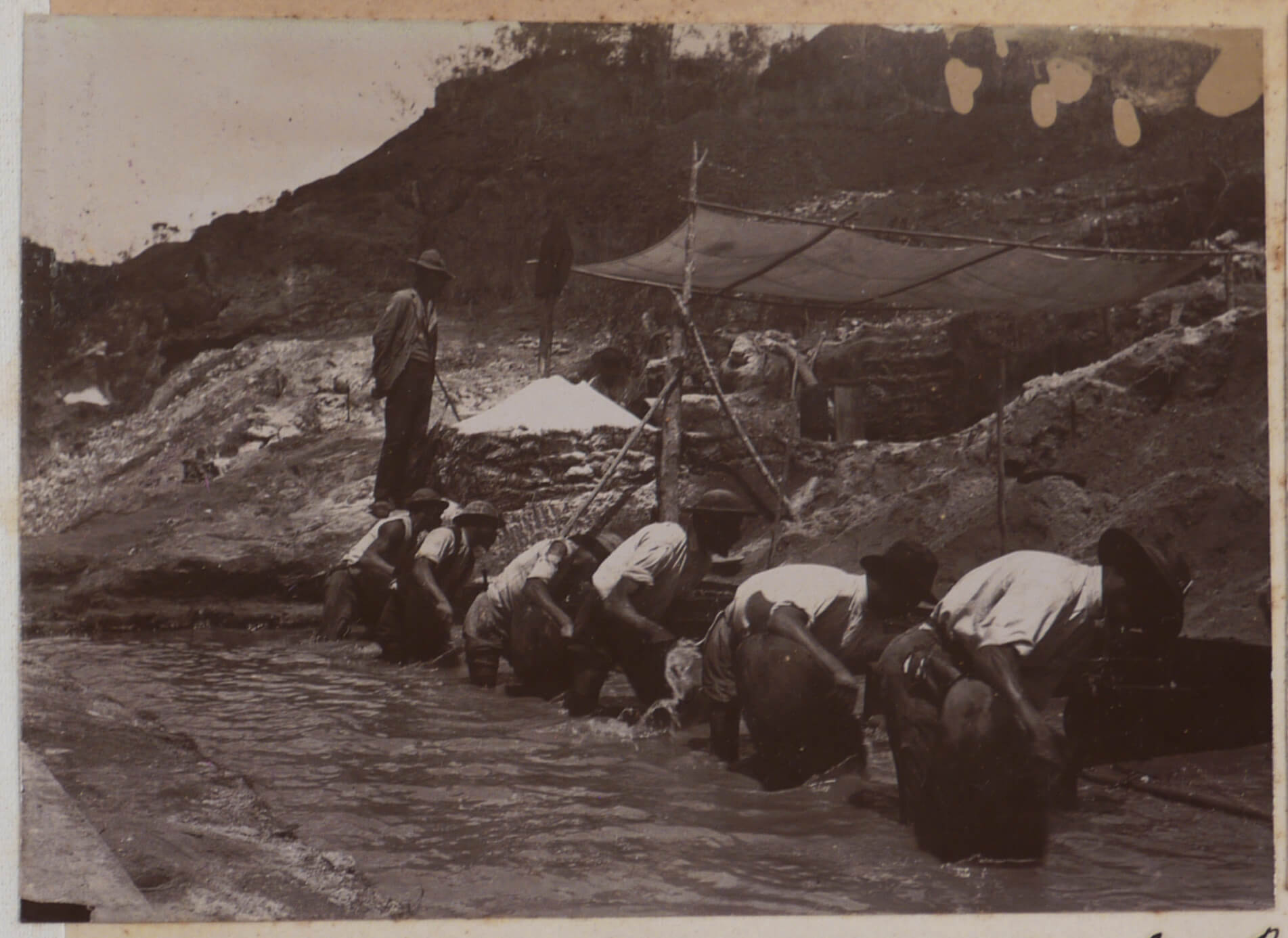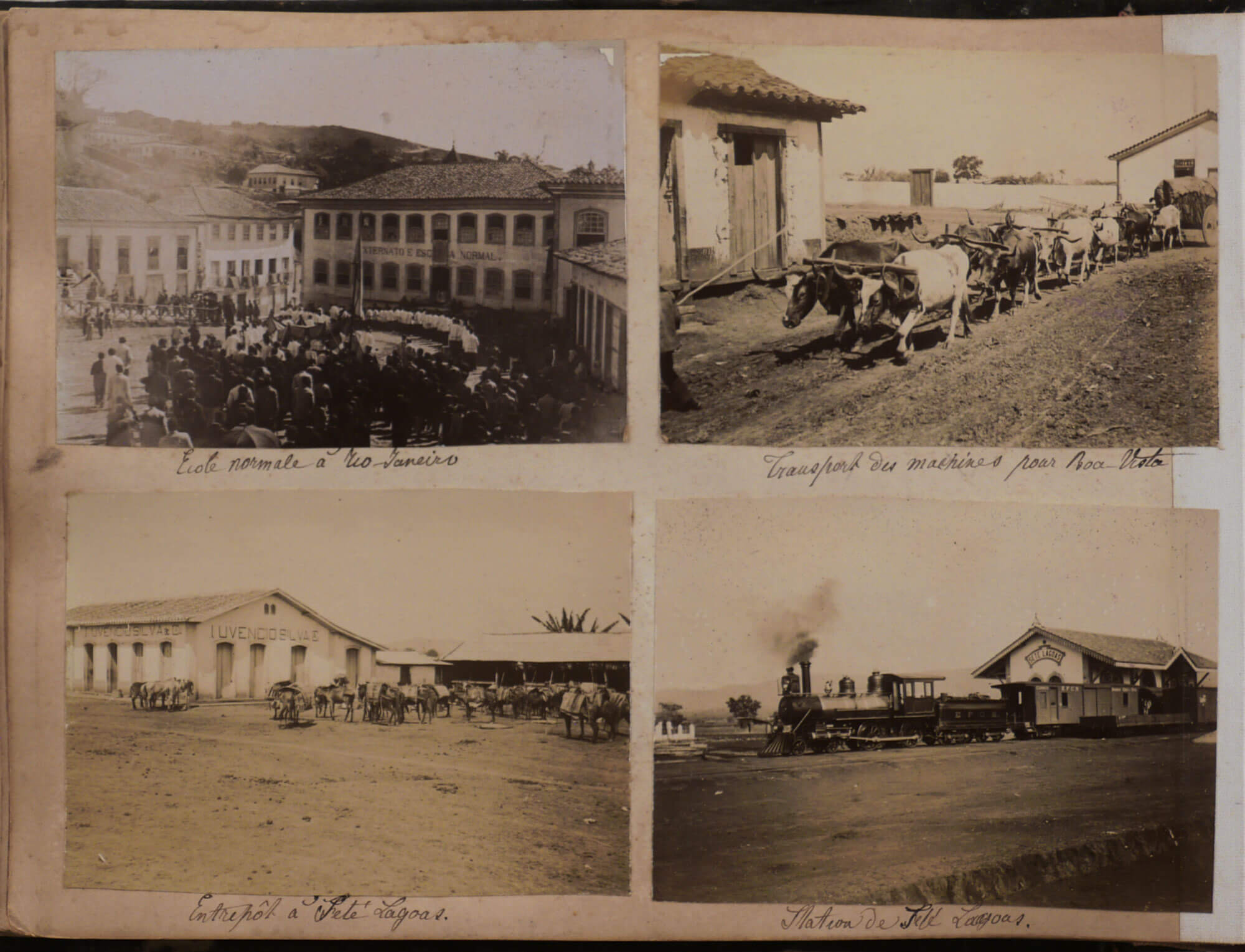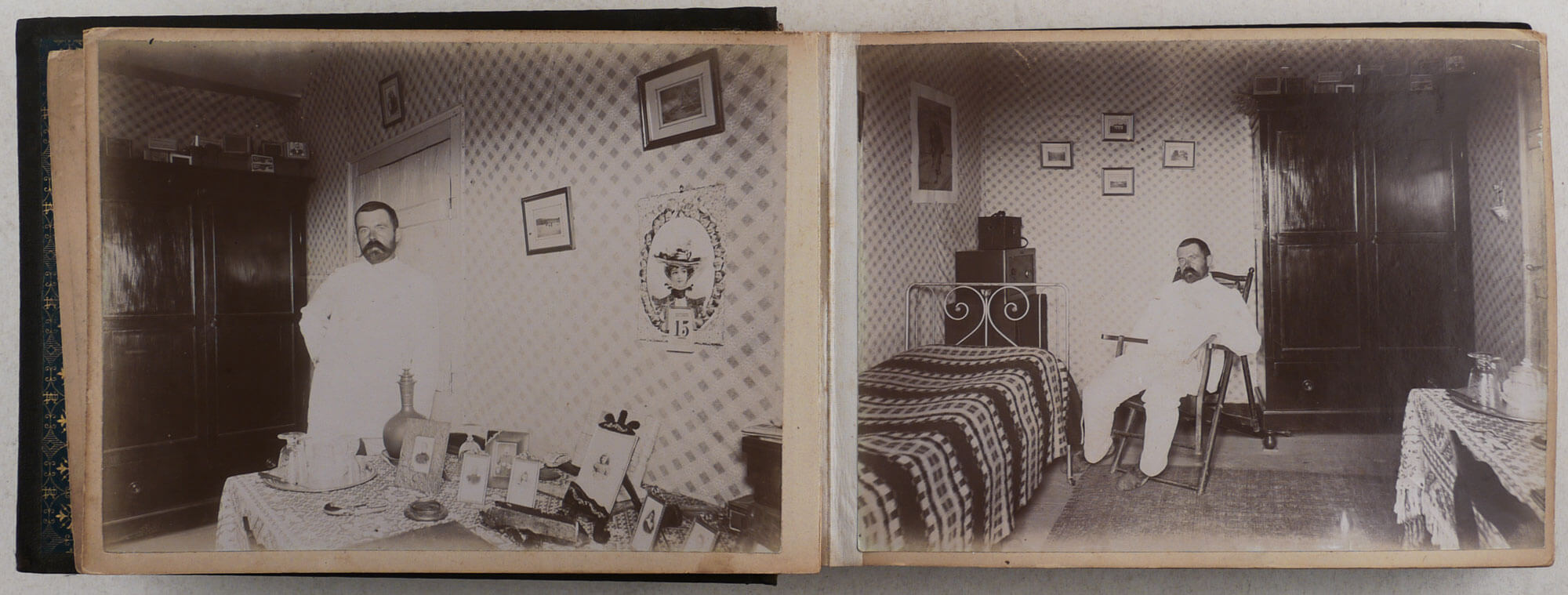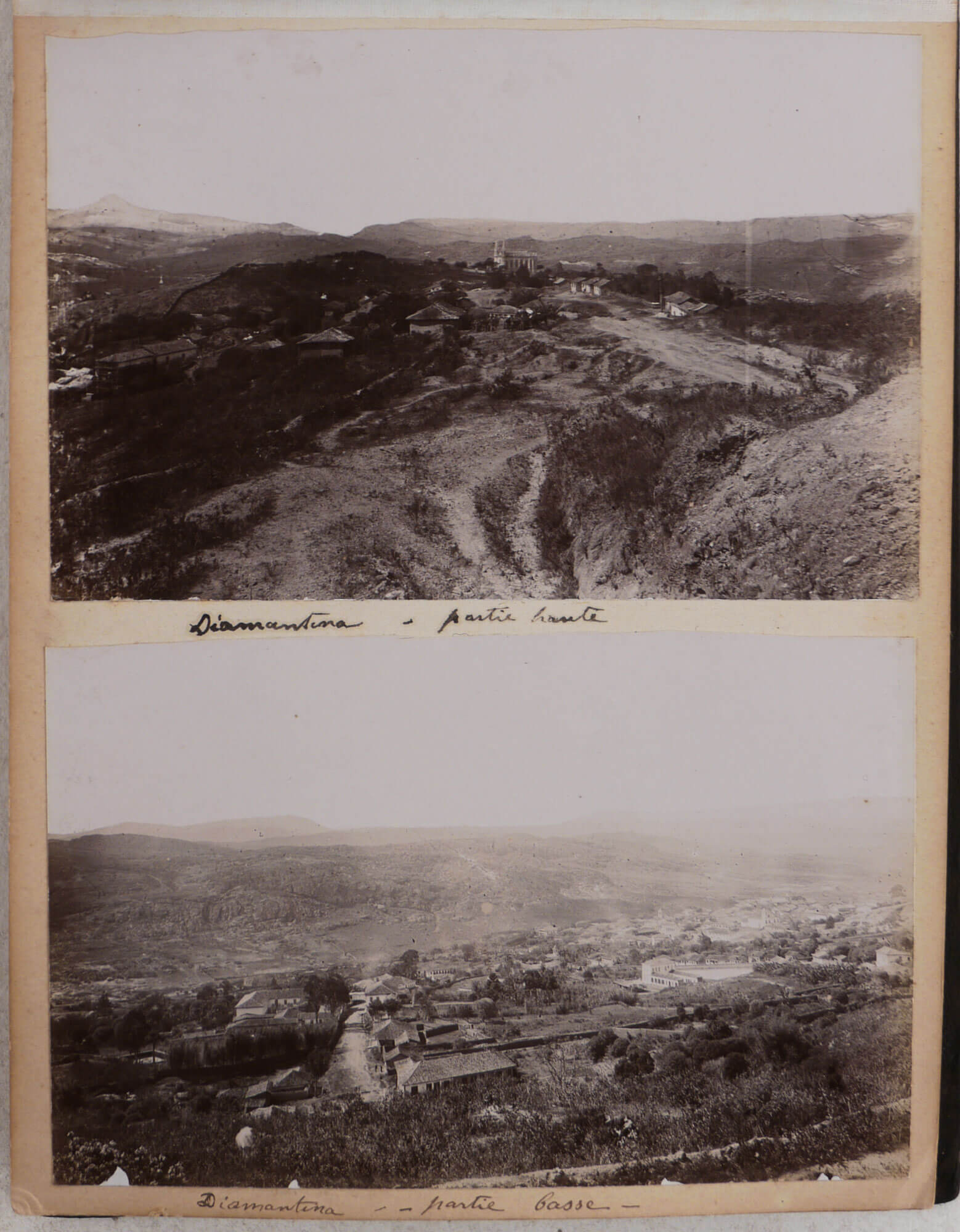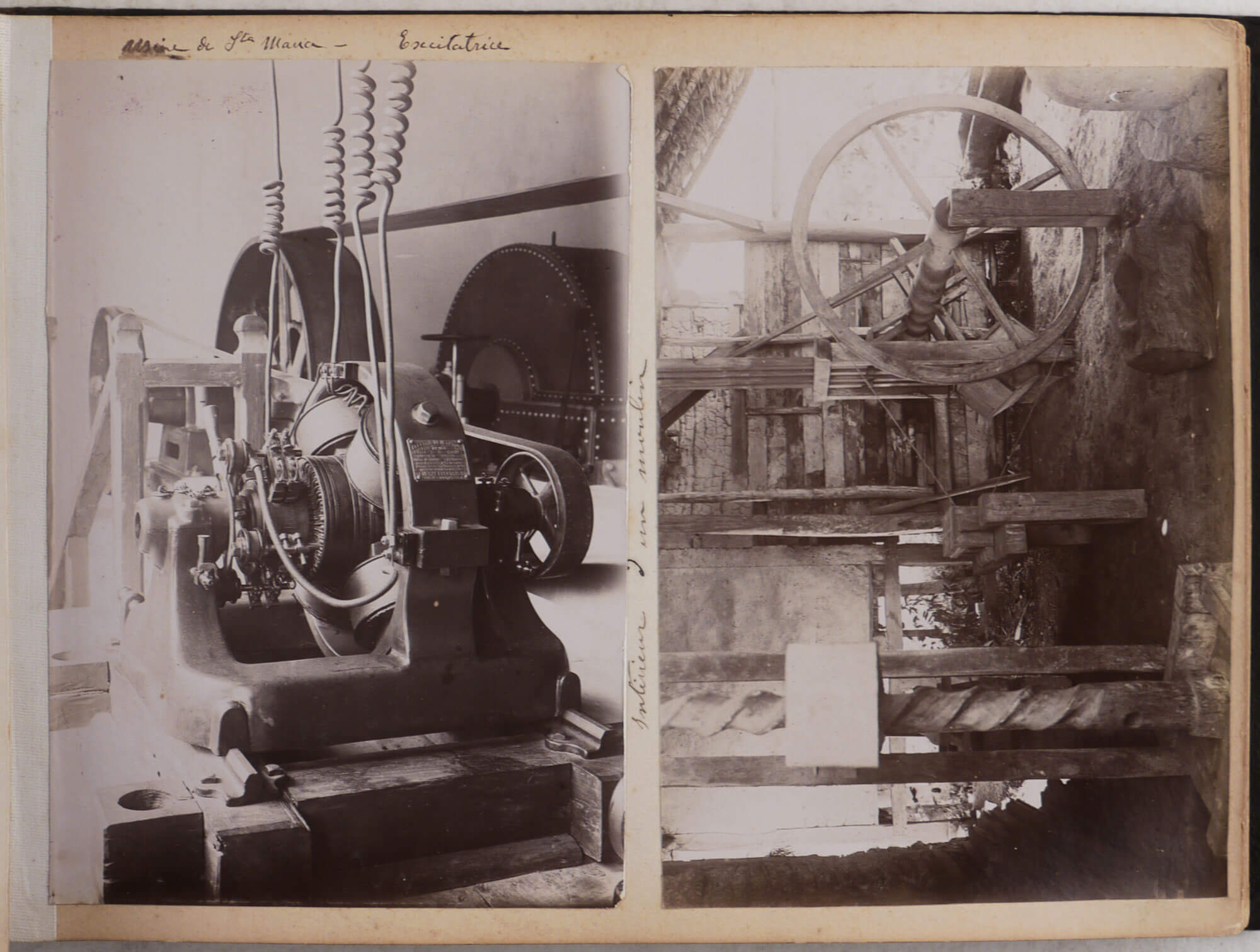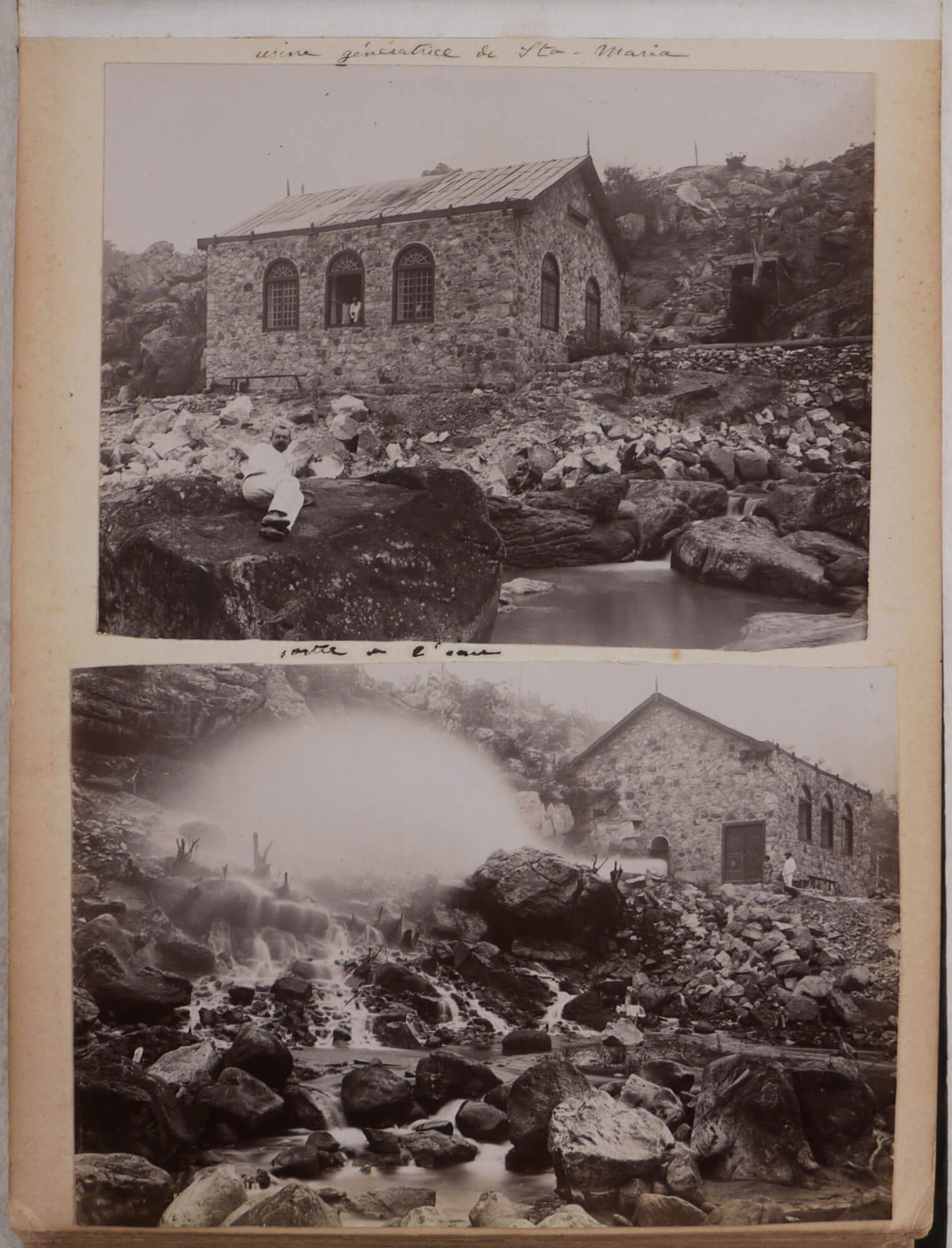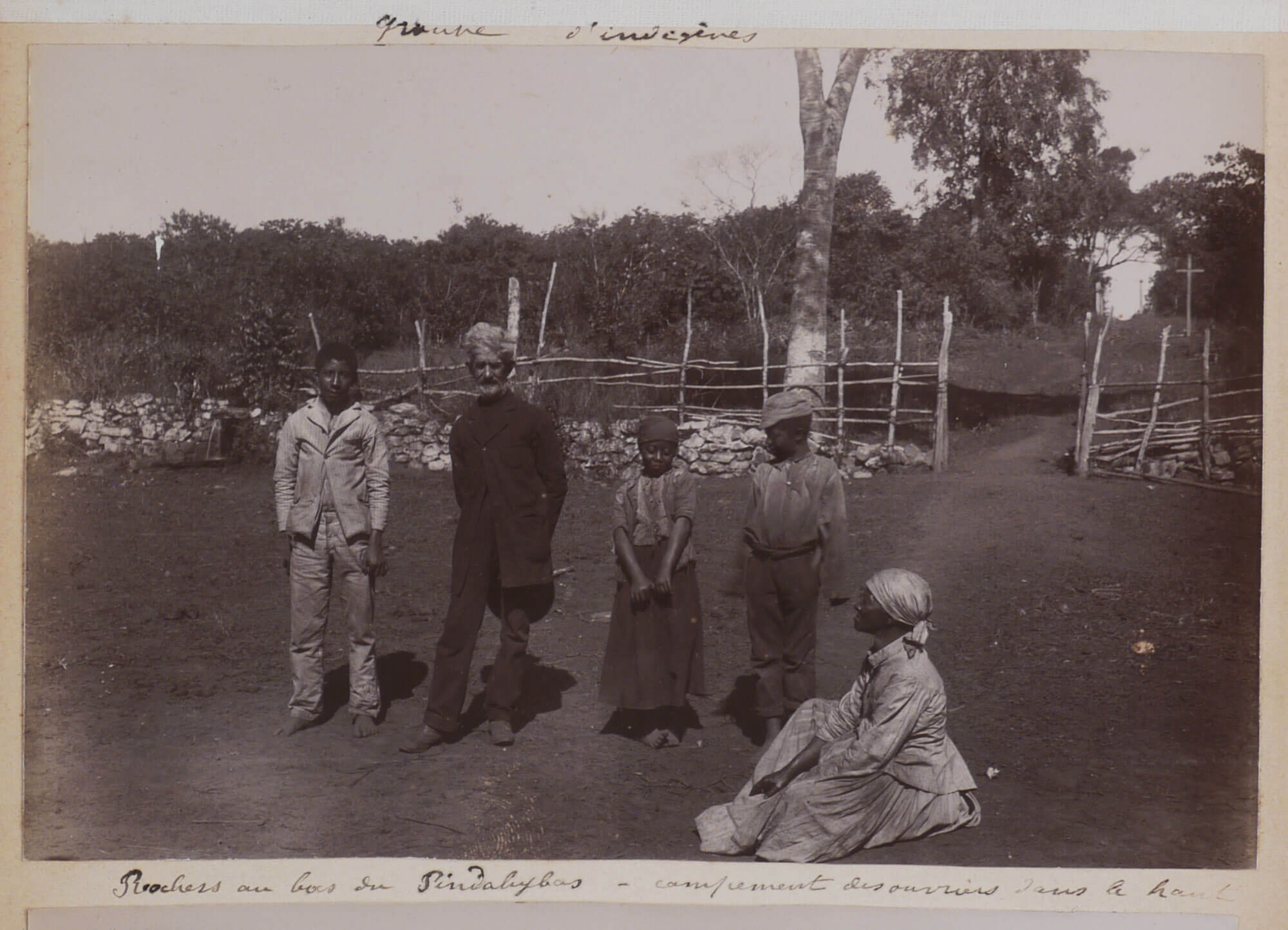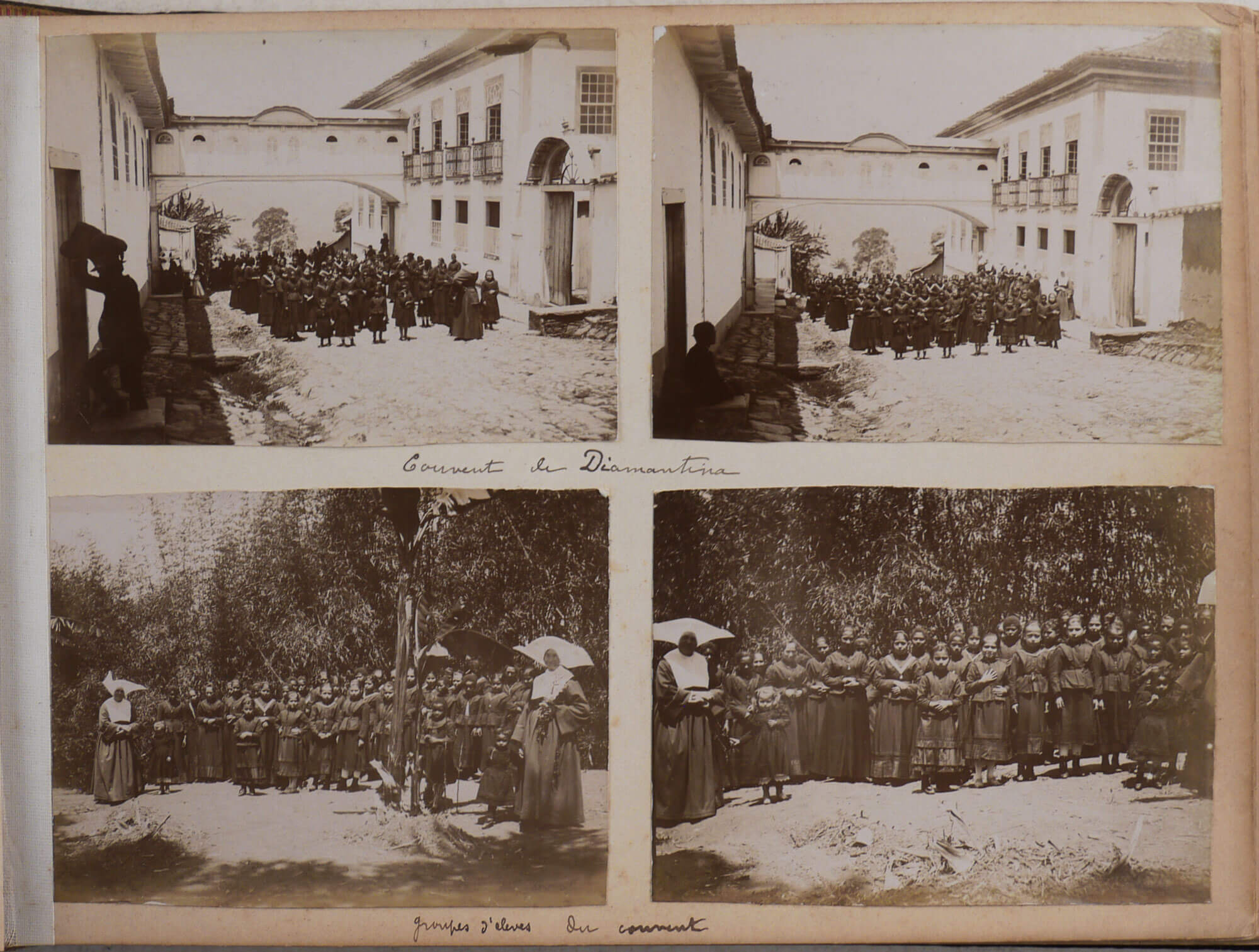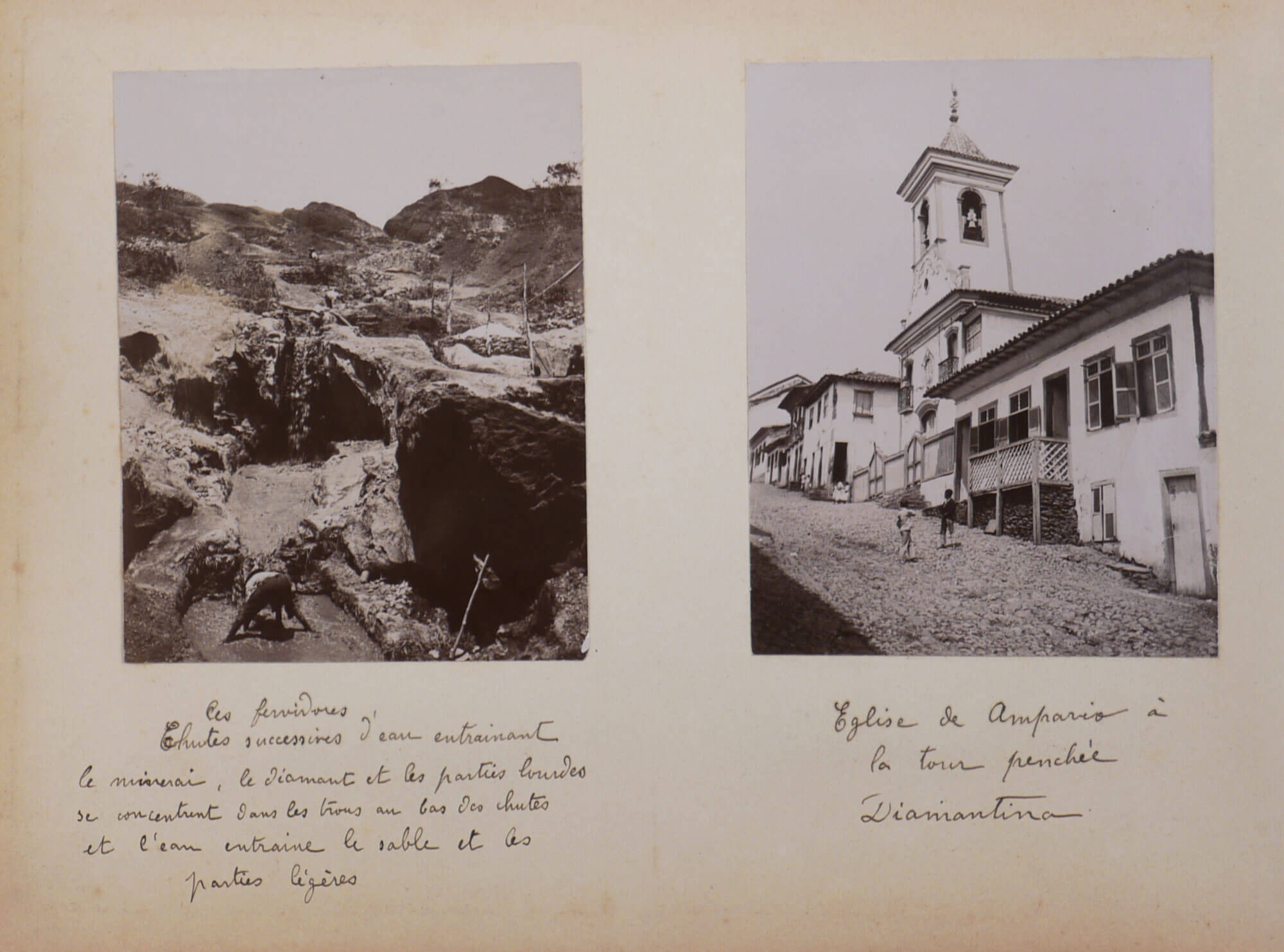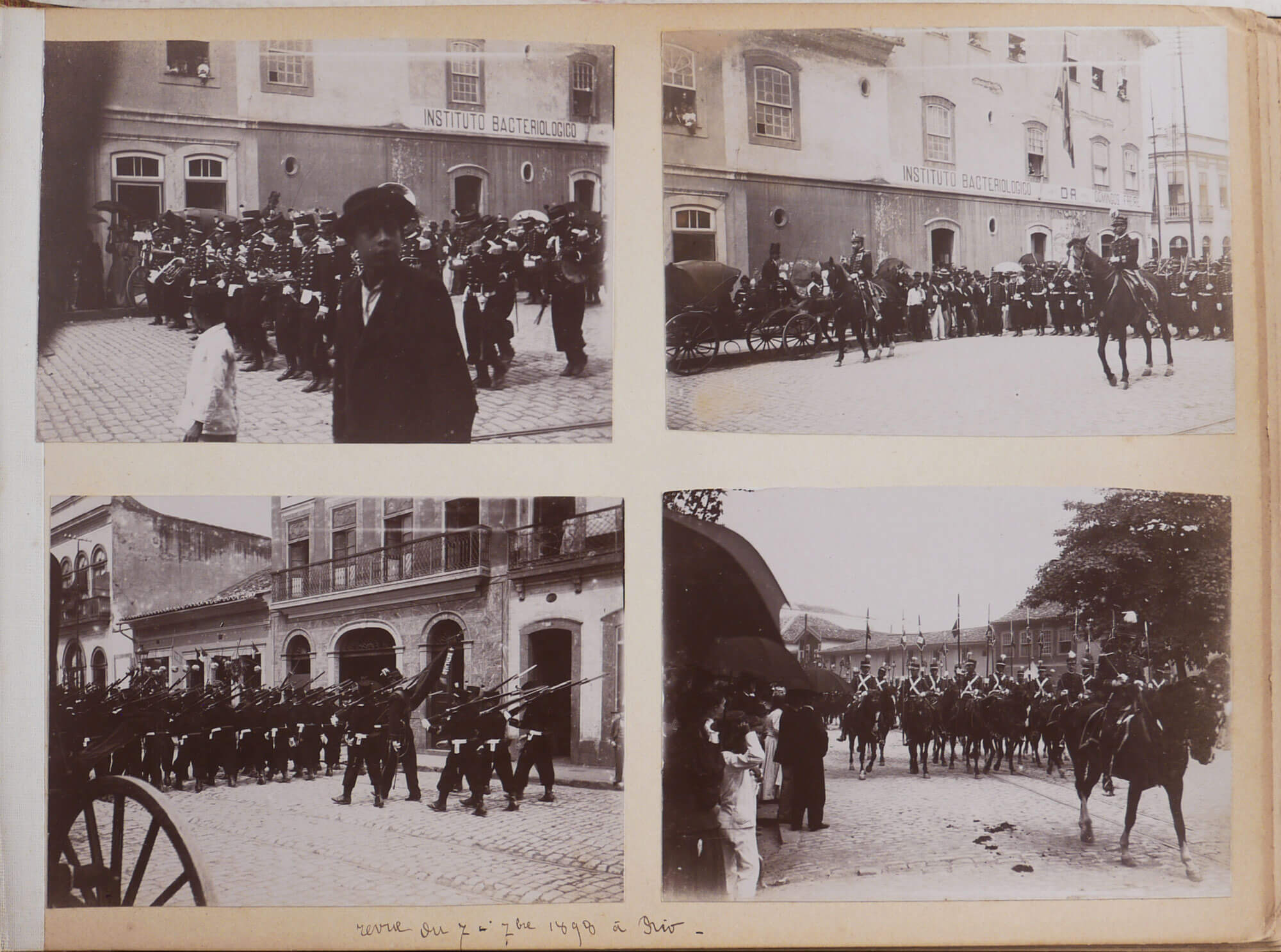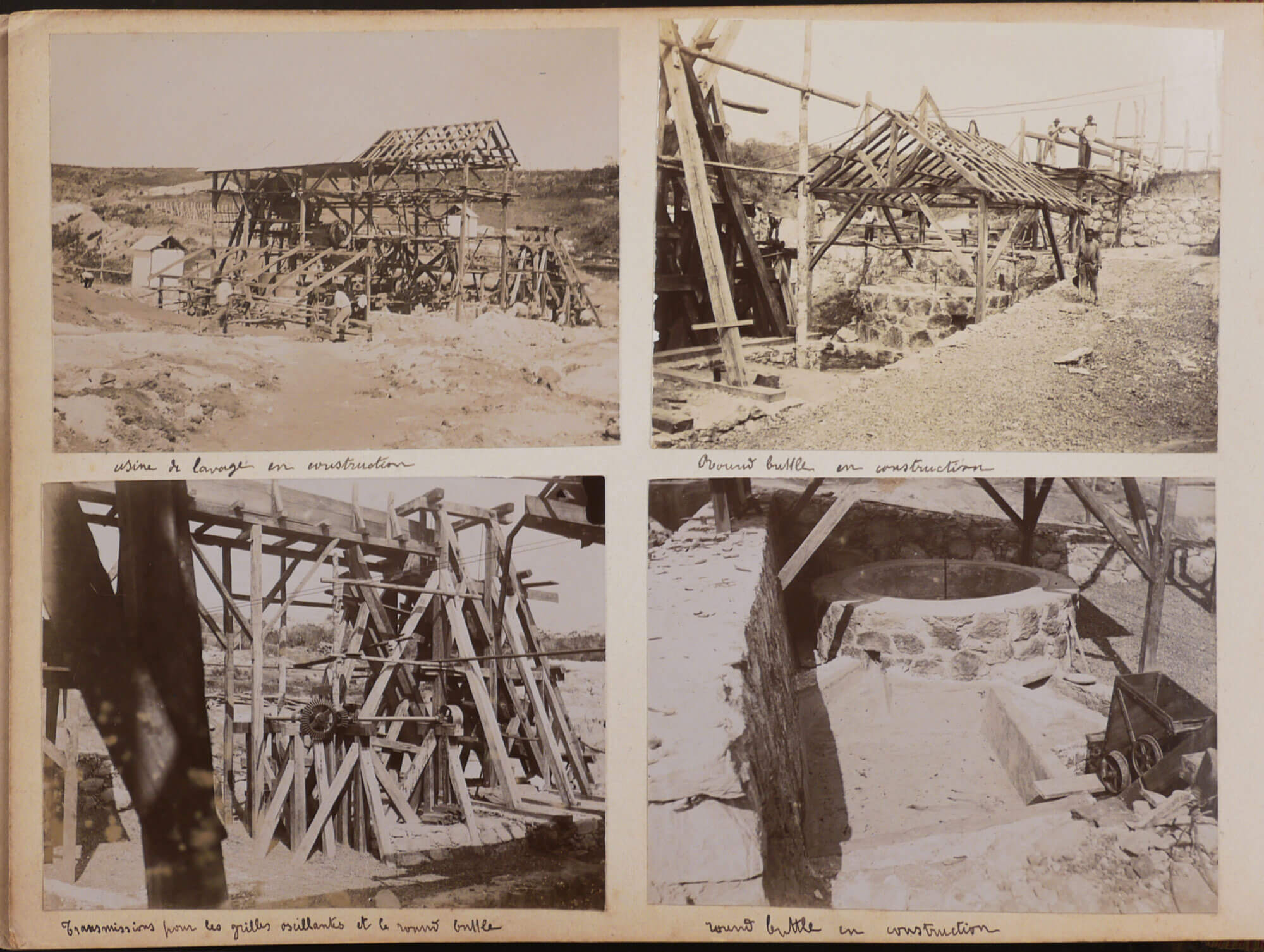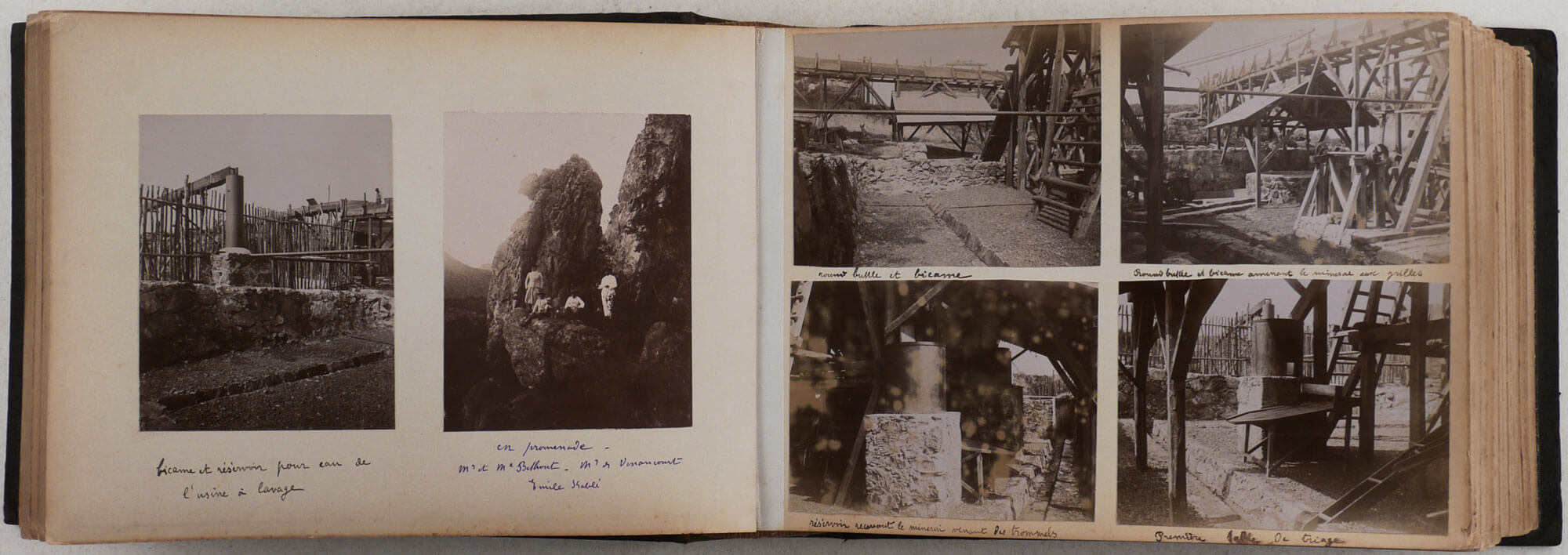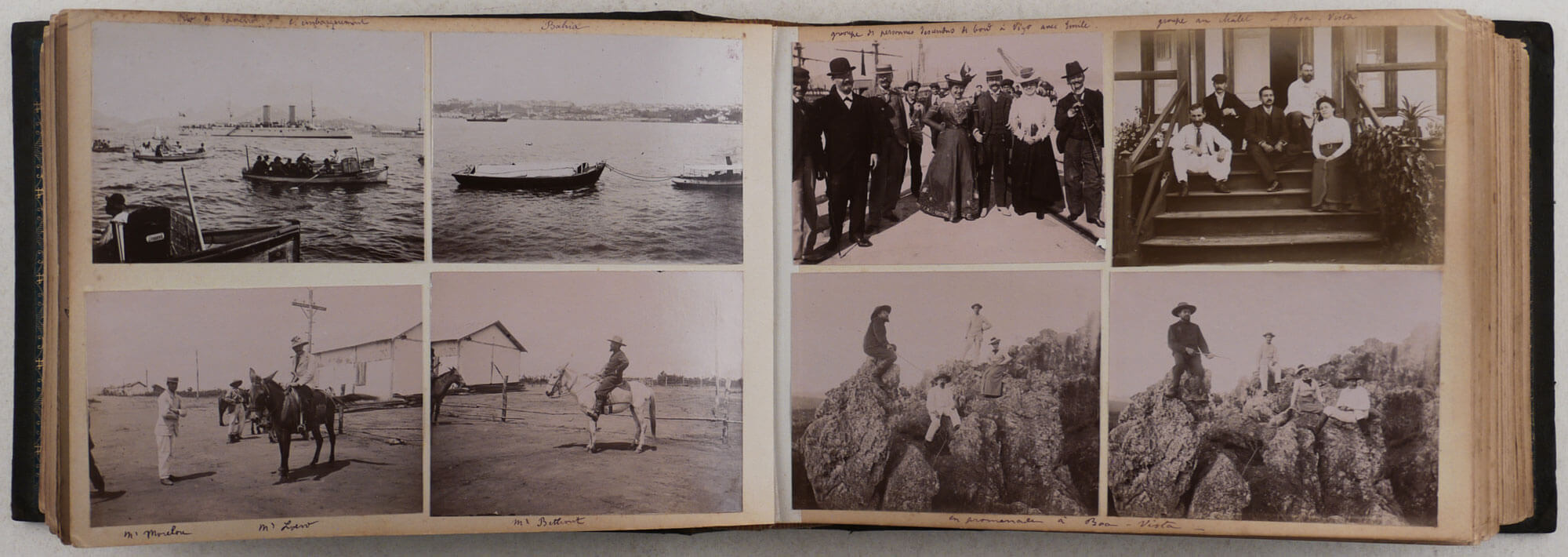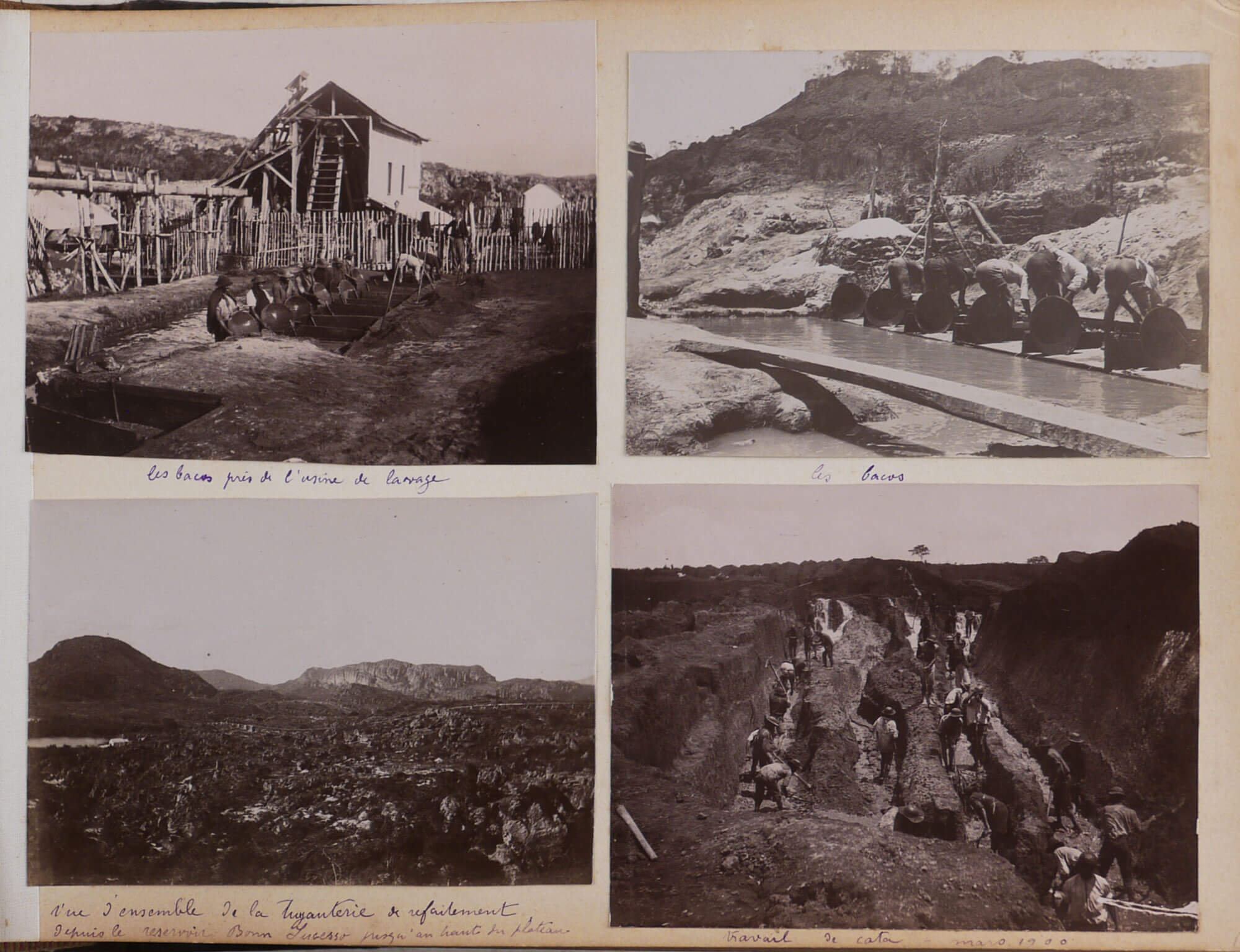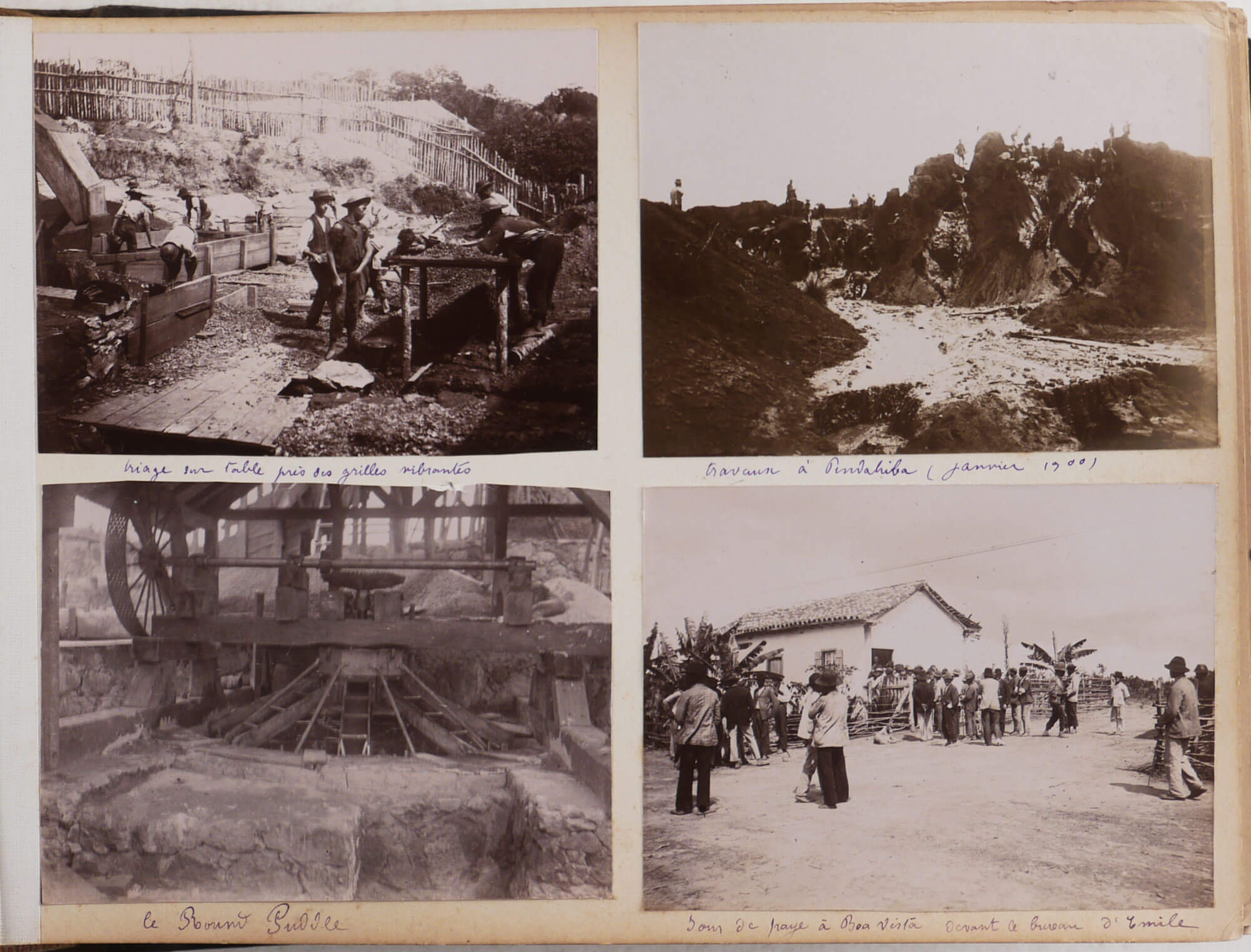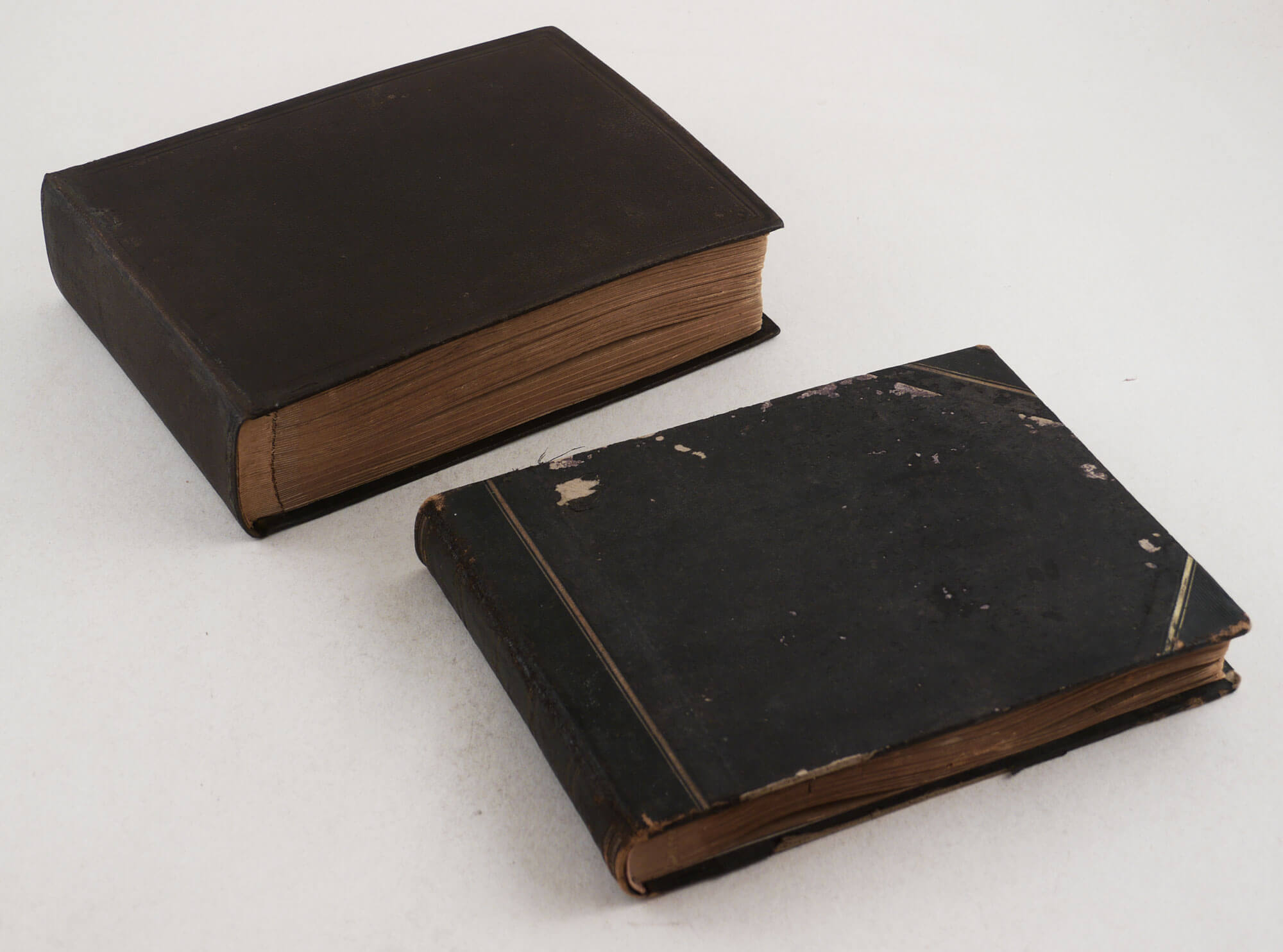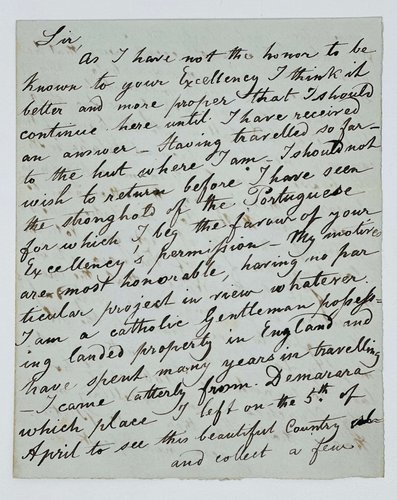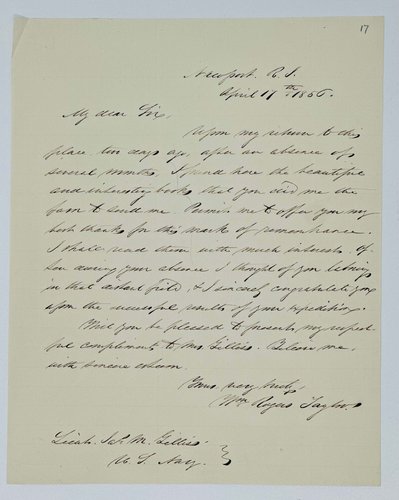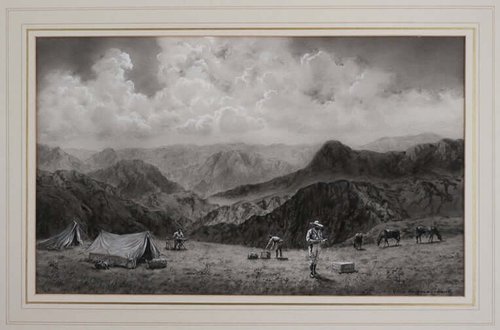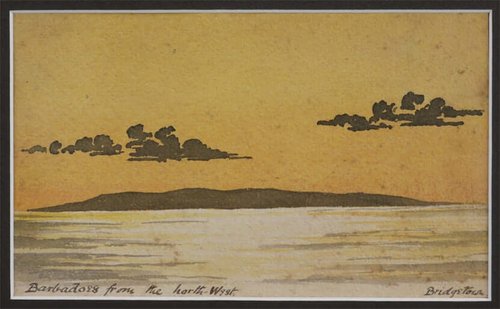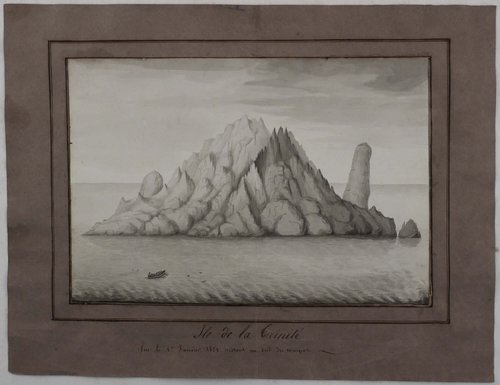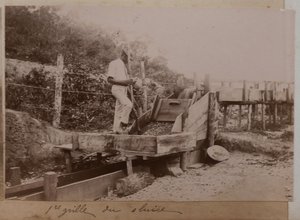
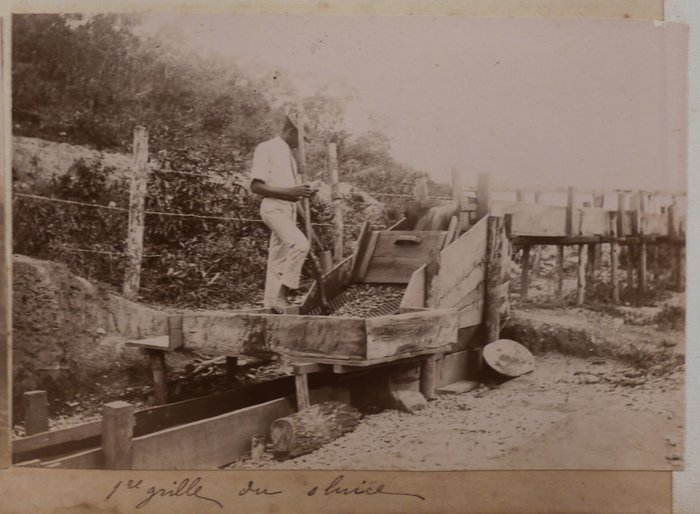
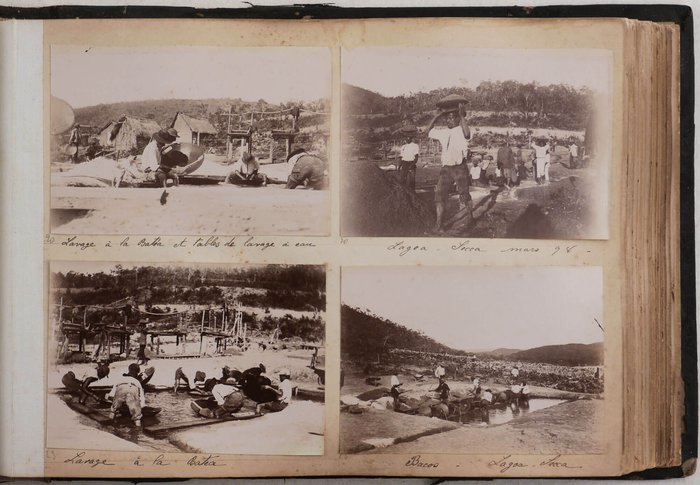
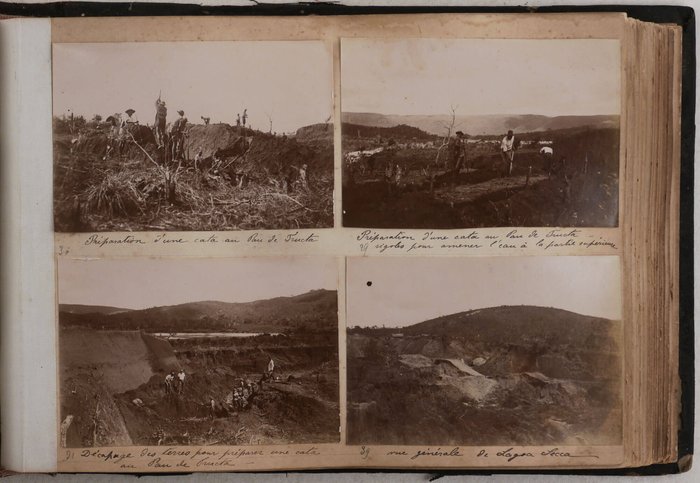
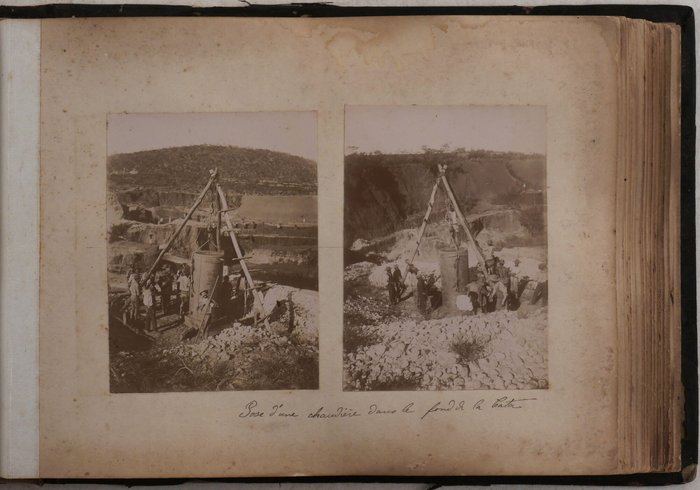
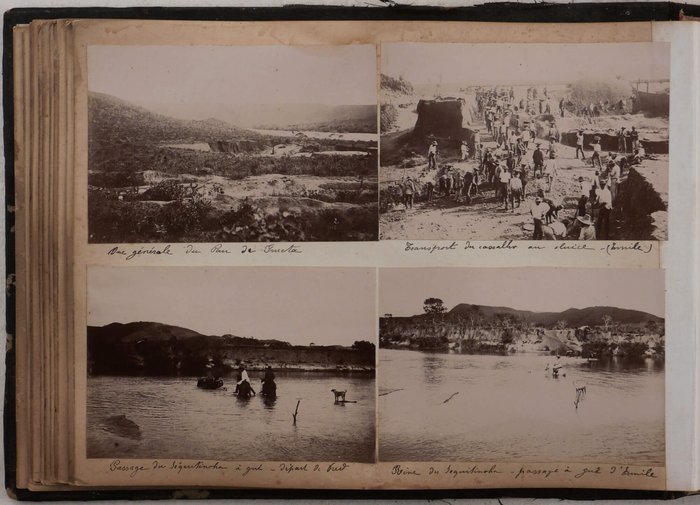
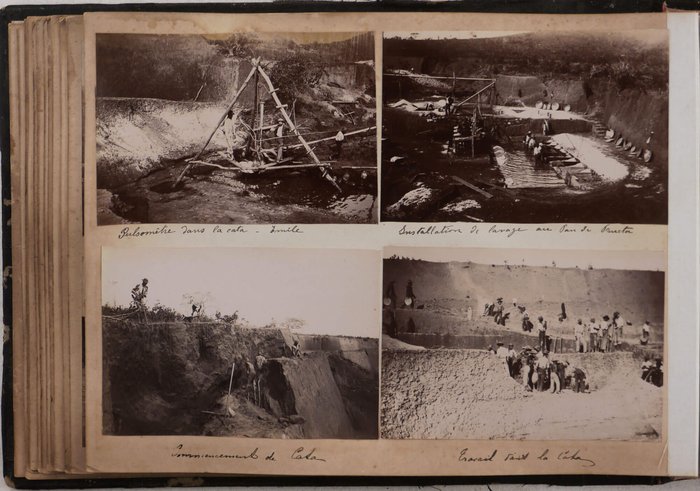
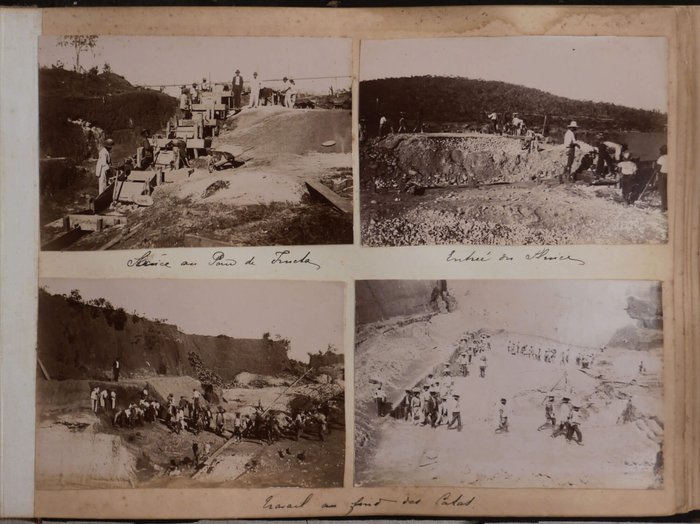
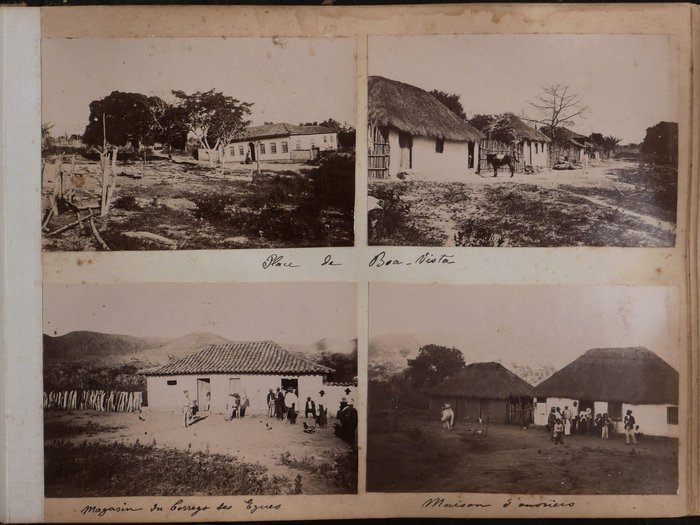
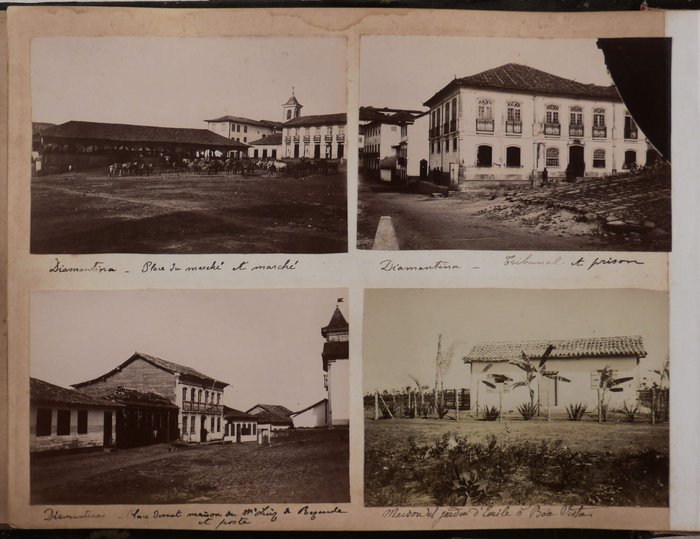
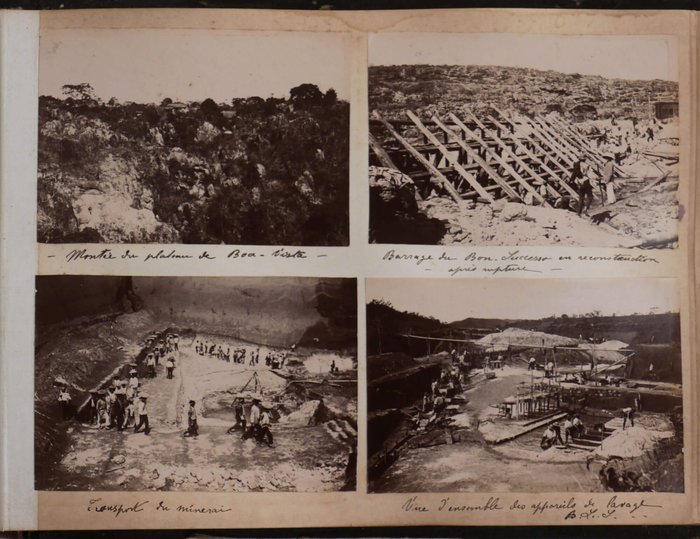
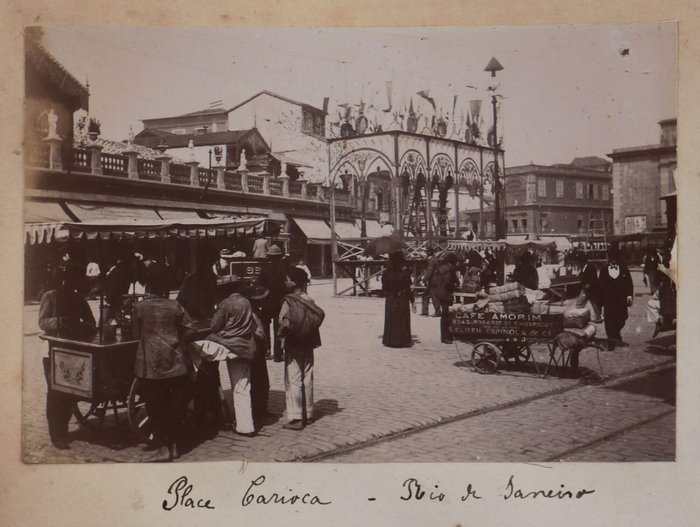
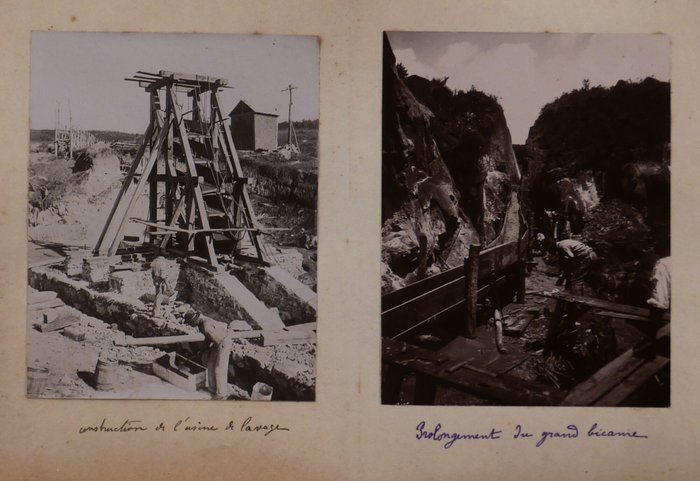
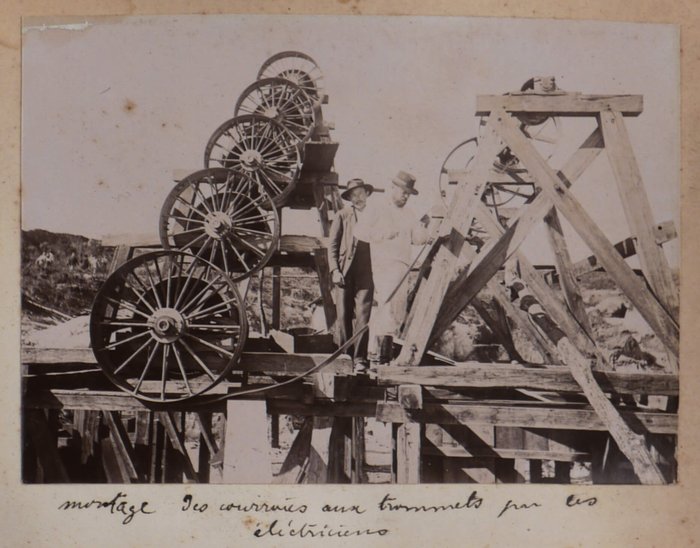
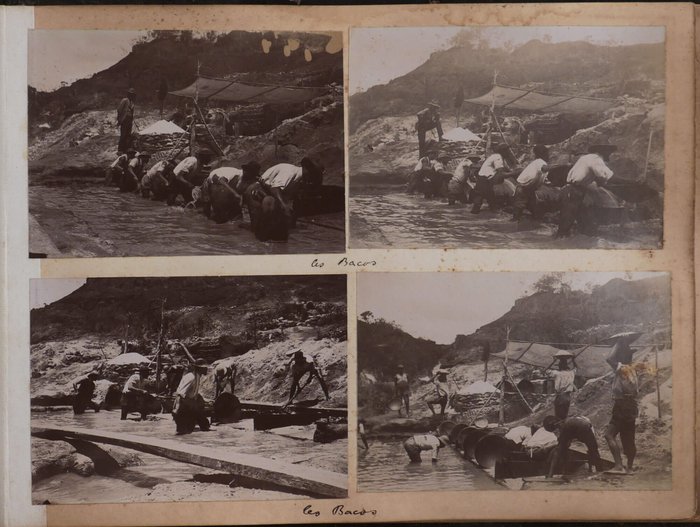
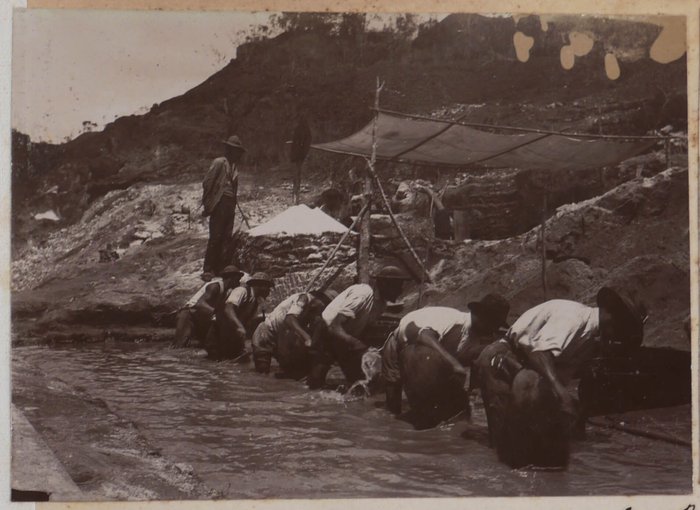
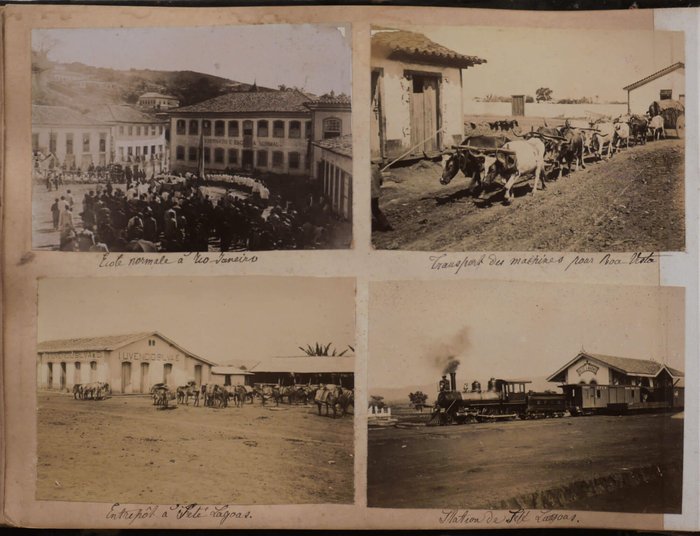
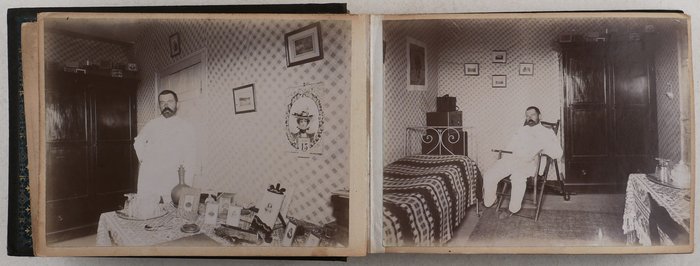
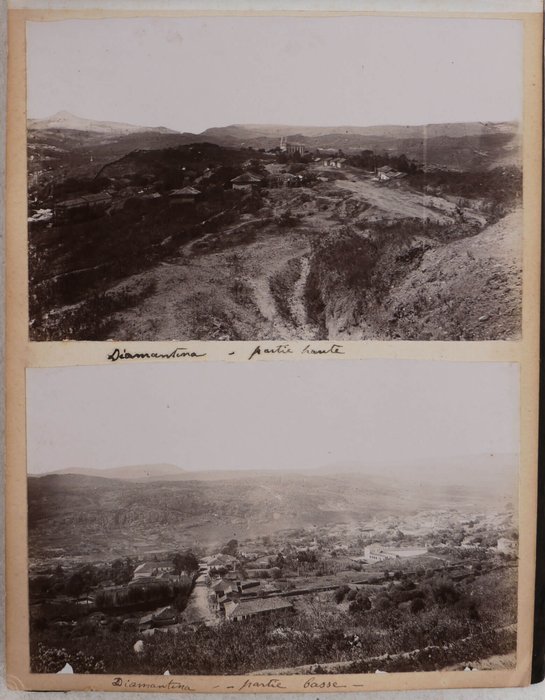
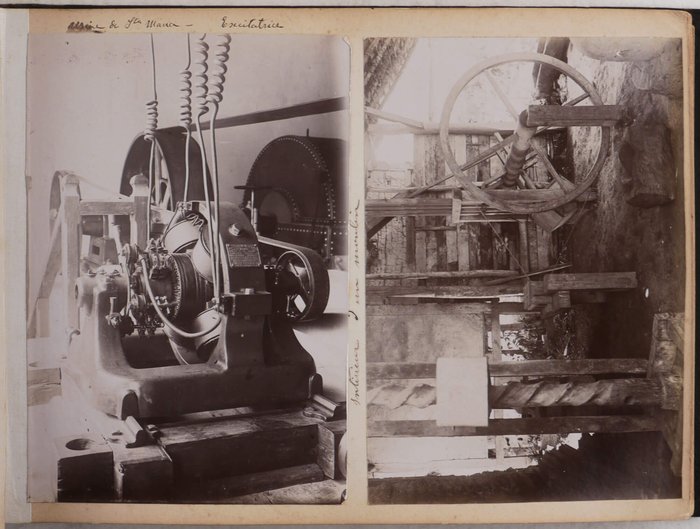
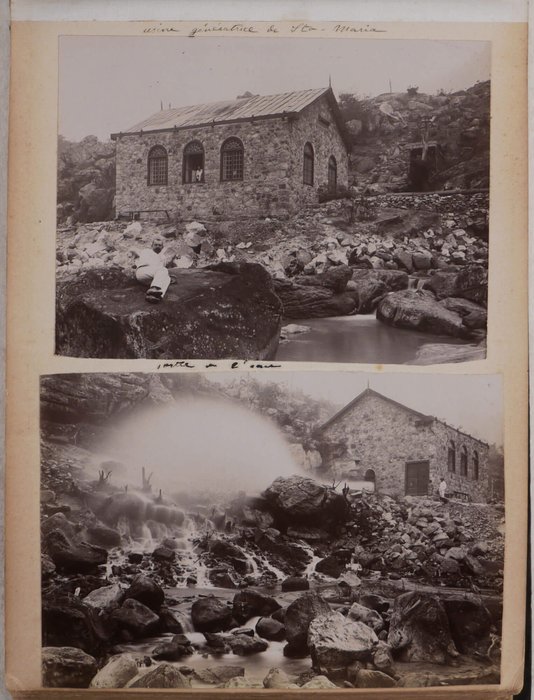
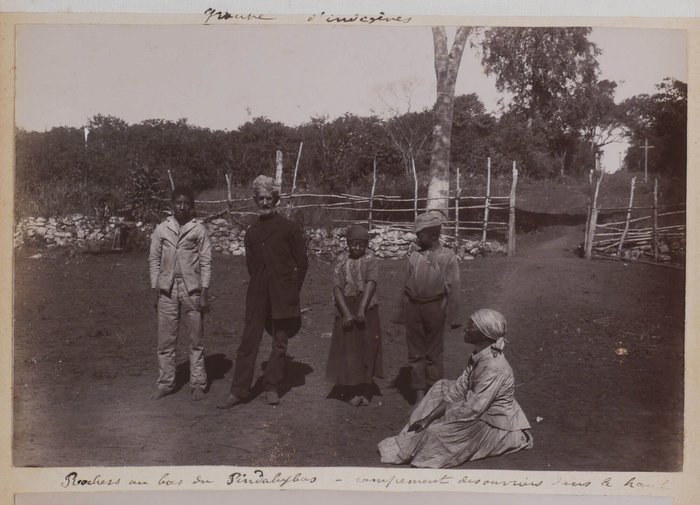
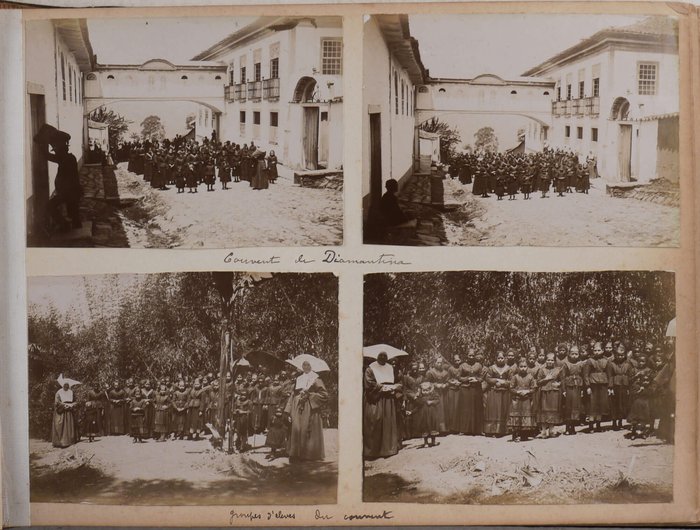
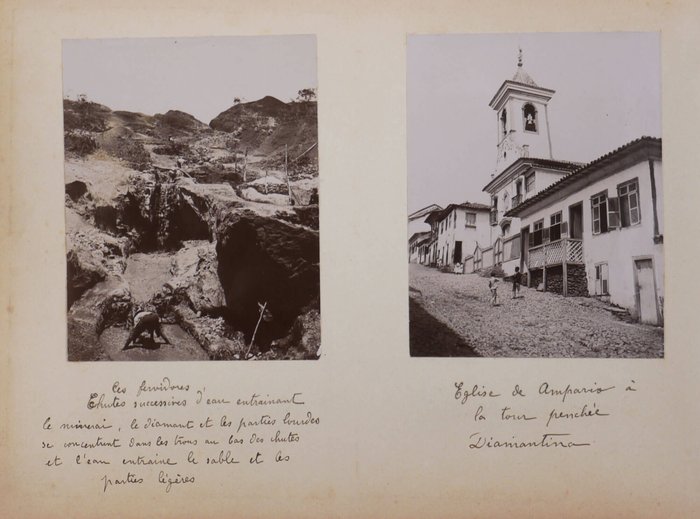
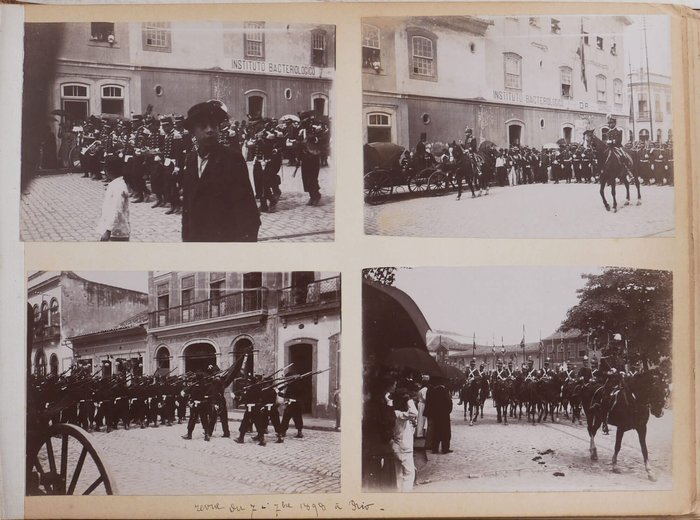
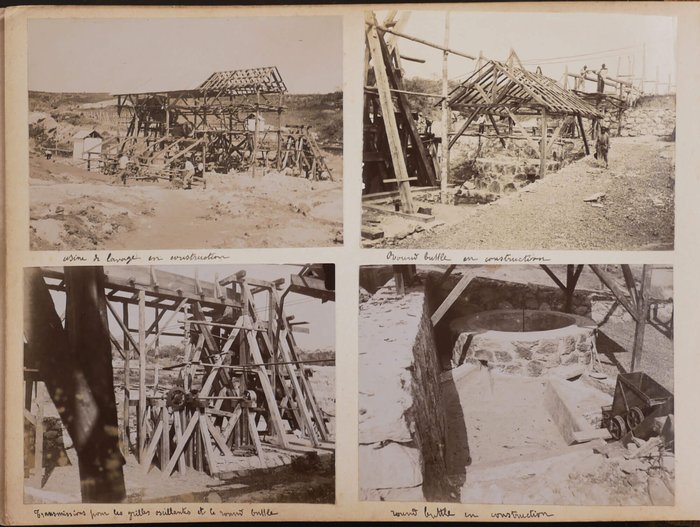
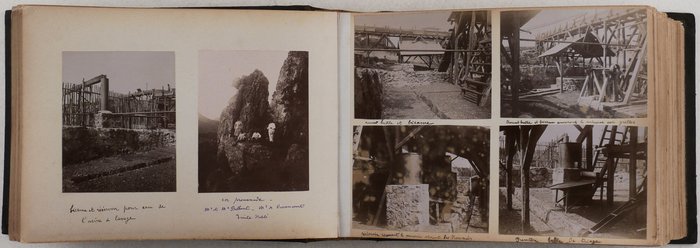
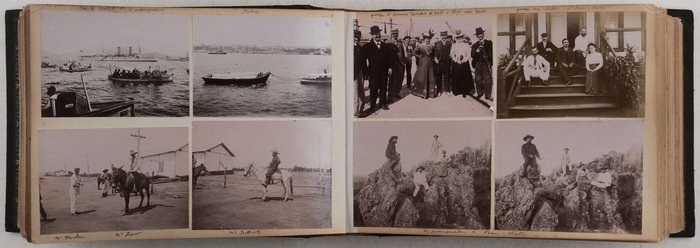
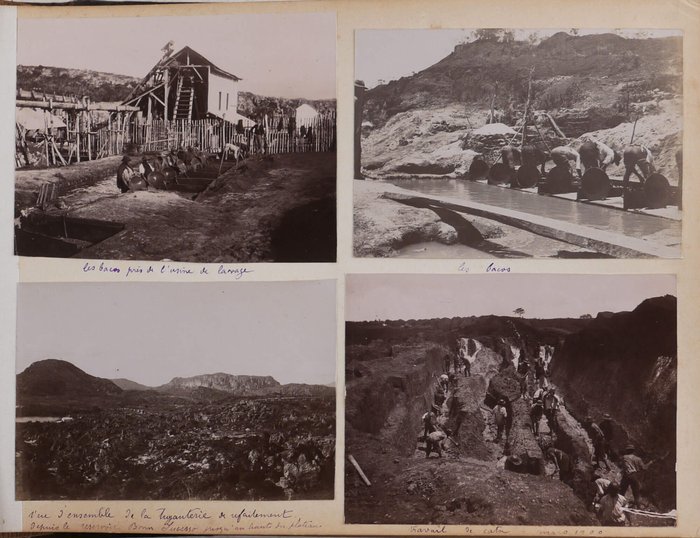
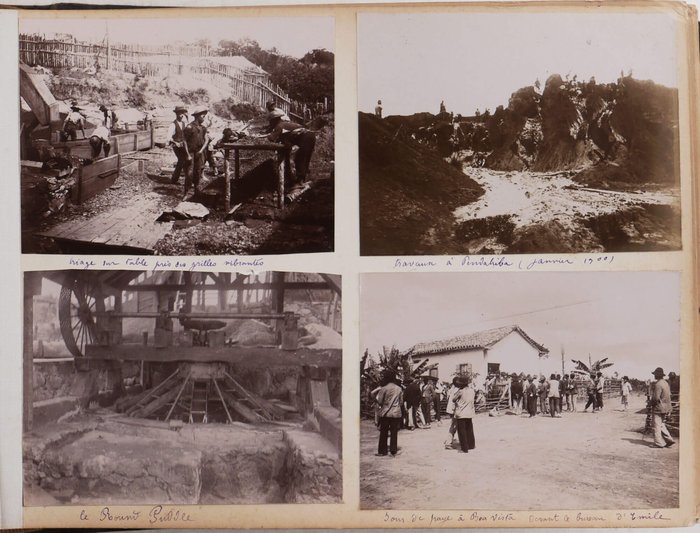
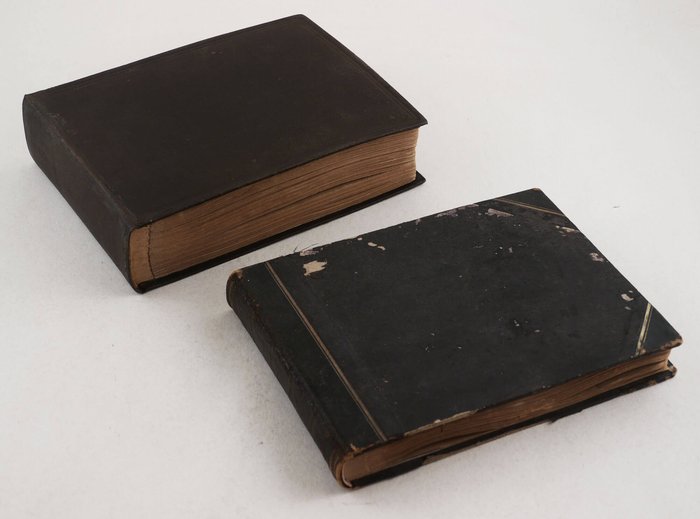
#PC49ab
Ca. 1897-1900
Two Oblong Quarto albums (ca. 19x26,5 cm or 7 ½ x 10 ¼ in). 30 and 50 card stock leaves. Album 1: with 222 mounted gelatin silver photos from ca. 8,5x11 cm (3 ¼ x 4 ¼ in) to ca. 7x11 cm (2 ¾ x 4 ¼ in). All but a dozen photos with period ink captions on the mounts (some captions relate to several photos, some photos are also dated in ink). Period brown quarter sheep album with cloth boards. Binding rubbed on extremities, the boards with scratches, mounts slightly soiled and waved, a few photos mildly faded, but overall a very good album of interesting photos. Album 2: with 247 mounted gelatin silver photos, including three large photos ca. 17x22,5 cm (6 ¾ x 8 ¾ in) and twenty photos ca. 11x16,5 cm (4 ¼ x 6 ½ in); the rest of the photos are ca. 8,5x11 cm (3 ¼ x 4 ¼ in) or slightly smaller. Over 180 photos with period ink captions on the mounts (some captions relate to several images). Period brown full cloth album; decorative endpapers. Binding rubbed on extremities, mounts slightly age-toned and waved, a few photos mildly faded, but overall a very good album of interesting photos.
Historically significant extensive collection of over 460 original gelatin silver photographs of diamond mining operations near Diamantina (Minas Gerais state of Brazil) in the late 1890s – early 1900s. The albums belonged to one Emile Kablé, a native of Sedan (north-eastern France), who worked for the French mining “Companhia da Boa Vista” near Diamantina. Chronologically, the albums cover Kablé’s work in Brazil between December 1897 and May 1900. In May – October 1900, Kablé visited his family in France and then resumed working in Brazil. In June 1901, he left Bahia for France and apparently didn’t come back.
“The French company, Companhia da Boa Vista is considered the first to attempt to use modern methods to mine diamonds in Brazil. The Boa Vista Co. was established in Paris in 1899, capitalized at 2 million francs then to engage in diamond mining claims it had acquired about eight miles from Diamantina. The operation was directed by the Cuban-American engineer, Antonio de Lavendeyra with prior experience working on the Panama Canal. The French firm built a water reservoir on a conglomerate-bearing plateau from which it piped water needed for washing. It installed a power station whose dynamo was operated by a 500 horsepower Pelton wheel and electrical machinery was imported from the General Electric Co. (NY). Though it used modern electric dredging equipment, it failed as the price of diamonds was too low and the system of utilizing water pumped from the stream was unsound. Companhia da Boa Vista left the region prior to 1907” (Herold, Marc W., Rines, S. A half-century monopoly (1880-1930s): the black diamonds (carbonados) of Bahia and Jewish merchants// Revista Ciêncitas Administrativas. Universidade de Fortaleza, 2011, Vol. 17, No. 1. P. 30; see more).
“The first company to operate in this field was organized in France to exploit the Boa Vista mine but its program proved to be too ambitious and its transportation problem too expensive. It tried to divert the Jequitinhonha through a loop of the letter S at Logea Secca, but did not succeed in making the canal deep enough. At Boa Vista it installed a pump weighing many tons from which the writer subsequently sold nearly Cr. 20,000.00 worth of scrap, including bronze fittings, at a price when scrap was hardly worth anything. It attempted to exploit the Pacao Moreira which is one of the most difficult of its kind in the Jequitinhonha. Its operations on the Parauna river were also a failure” (Draper, T. The diamond mines of Diamantina – past and present// Gems & Gemology. Vol. VII. Fall 1951. No. 3. p. 97; see more).
The albums provide a comprehensive visual account of “Companhia da Boa Vista’s” early mining activities near Diamantina. The earliest photos show earthworks at Lagoa Secca (north of the confluence of the Jequitinhonha River and its tributary Caete-Mirim) in late 1897-1898, as the company attempted to divert waters of the Jequitinhonha River. The images show native workers digging at the “Grande Cata” and “Pan de Fructa Cata,” washing paydirt for diamonds, installing and using special equipment (boilers, pulsometers, water sluices, mine carts). There are also views of the completed water reservoir, houses of the employees (including the compiler’s), “my garden at Lagoa Secca,” scenes from a local wedding ceremony, &c.
A large group of photos in the collection document the company’s large-scale operations at Boa Vista (near Bom Successo stream west of Diamantina), including excavation works at Bom Successo (barrage after rupture and during reconstruction, completed water reservoir and pump station, general view of the settlement), Pindahybas (construction of a barrage, water reservoir, earthworks) and Tahoa. The other images show the Boa Vista settlement in general, the main office under construction and after completion, houses of the employees (with three large photos of the interior of Kablé’s house), warehouses, carpenters’ hangar, construction of the washing plant, &c. Images of the company’s electric plant at Santa Maria show its exterior and interior (Pelton wheel, dynamo generator), pipe system, water exiting the station, &c. There are also portraits of the company’s employees (Kablé, general manager “Mr. de Lavandeyra” visiting Lagoa Secca and Boa Vista, “Mr. Buckley, électricien américain,” “Mr. Luisi,” “Mr. Morelon,” “Mr. Belhout,” and many others), and native workers washing paydirt, driving oxen carts with equipment, carrying adobe bricks, waiting for payment, posing with their families, &c.
The albums also include interesting views of Diamantina (general views of the “upper” and “lower” parts, post office, city jail, market square, church of St. Nicolas, the shop of “Antonio Eulalio & Comp.”) and other locations in the region - Sete Lagoas (railway station, the building of “Juvencio Silva & Cie,” warehouses, equestrian competitions), Sopa, Campinas de Saõ Sebastiaõ, &c. Eight photos portray nuns and orphan girls from the Catholic College de Nossa Senhora das Dores in Diamantina. Over twenty photos were taken during Kablé’s visit to Rio de Janeiro in September 1898 and show Hotel Villa Moreau in Tijuca, scenes of a military parade on Independence Day (September 7, 1898), Rio harbour and streets, the Naval school, the Imperial garden, &c.
About fifty photos in the second album illustrate Kablé’s voyage to France and back in May – October 1900. The images show scenes on board the steamer “Chili” during the outbound voyage, the harbours of Rio de Janeiro and Dakar, streets of Lisbon and Vigo. Another fifty-nine photographs at the rear depict Kablé’s time with the family in France in the summer of 1900, showing his hometown of Sedan, nearby Bazeilles and the Belgian city of Bouillon, and beach scenes at Belgian seaside resorts Middelkerke and Ostend. There are also portraits of family and friends, including Kablé’s wife Berthe and daughter Madelaine.
Overall an important extensive original visual source on the early history of diamond mining in Brazil.

